The Falkland Islands, located in the South Atlantic Ocean, are home to a diverse range of avian species. With a wide variety of habitats, including rocky coastlines, moorlands, and wetlands, the islands support more than 70 different bird species.
Many of these birds are seabirds that nest on the cliffs and islets surrounding the islands, while others are resident land birds that have adapted to the unique environmental conditions of the archipelago.
Some of the most iconic bird species found on the Falkland Islands include the rockhopper penguin, the black-browed albatross, and the Falkland steamer duck.
The birdlife of the Falkland Islands is not only a vital part of the natural ecosystem but also a significant source of enjoyment for locals and tourists alike.
1. Plovers

Plovers are a family of around 64-68 species of ground-dwelling birds, commonly found in open country such as fields, meadows, and tundras.
They have short bills with webbed feet to help them forage through mud or shallow water.
Plover plumage is usually mottled brown though some species may have brighter colors on the head and wings.
These birds feed mainly on insects but can also eat small crustaceans and worms.
Plovers breed during springtime when they dig holes in sandy or pebbled beaches to lay their eggs which hatch after about 3 weeks incubation period.
They use distraction display behavior by pretending an injury to the predators away from their nests if needed to protect their young ones.
Scientific classification:
| Kingdom | Animalia |
| Phylum | Chordata |
| Class | Aves |
| Order | Charadriiformes |
| Family | Charadriidae Leach, 1820 |
Also Featured In: Most Common Birds in China, Turkey Birds You Should Know
2. Wrens
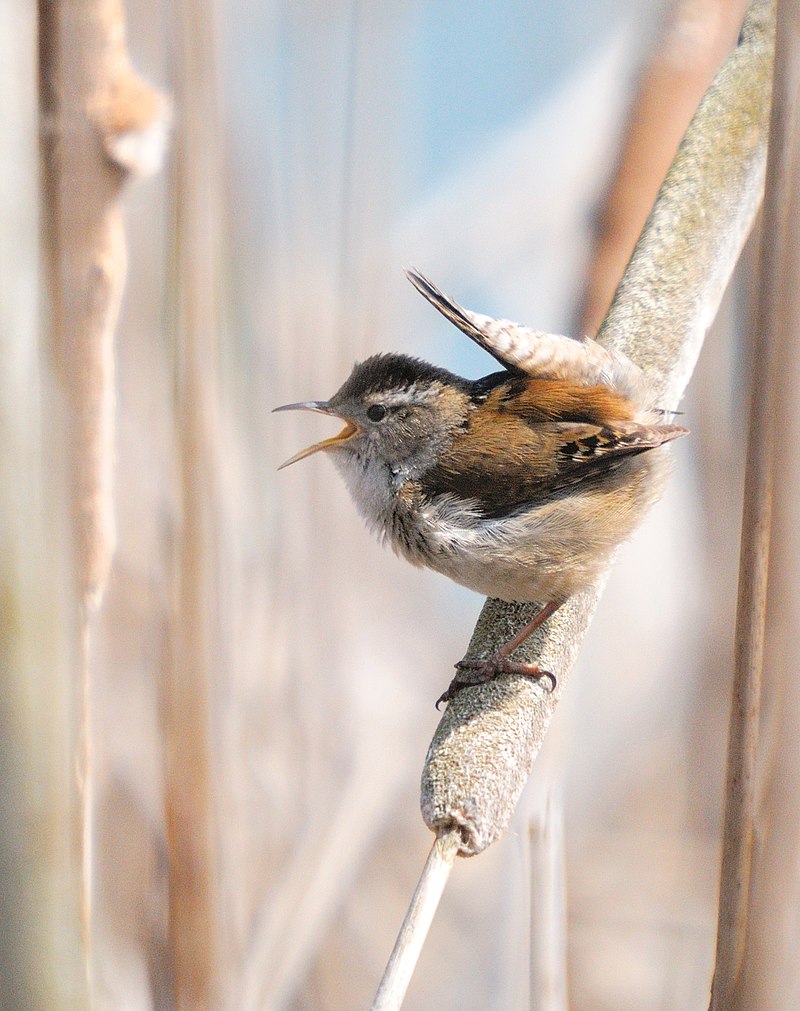
Wrens are a family of small brown passerine birds found mainly in the Americas. They are considered one of the most abundant bird species, with 88 known varieties divided into 19 genera.
The Eurasian wren is the only type that inhabits Europe and other parts of the Old World, where it’s commonly referred to simply as “wren.”
This species has been given its name due to similar-looking unrelated birds living elsewhere such as New Zealand wrasses.
Wrens have tiny bodies with thin bills and long tails which they often hold upright for hours at a time while singing their loud cheery songs from treetops or low shrubs.
Their diet consists mostly of insects but can also include fruits and seeds depending on availability in their habitat range.
Scientific classification:
| Kingdom | Animalia |
| Phylum | Chordata |
| Class | Aves |
| Order | Passeriformes |
| Superfamily | Certhioidea |
| Family | Troglodytidae Swainson, 1832 |
Also Featured In: Most Common United States Birds, Most Common Winter Birds
3. Kelp Gull
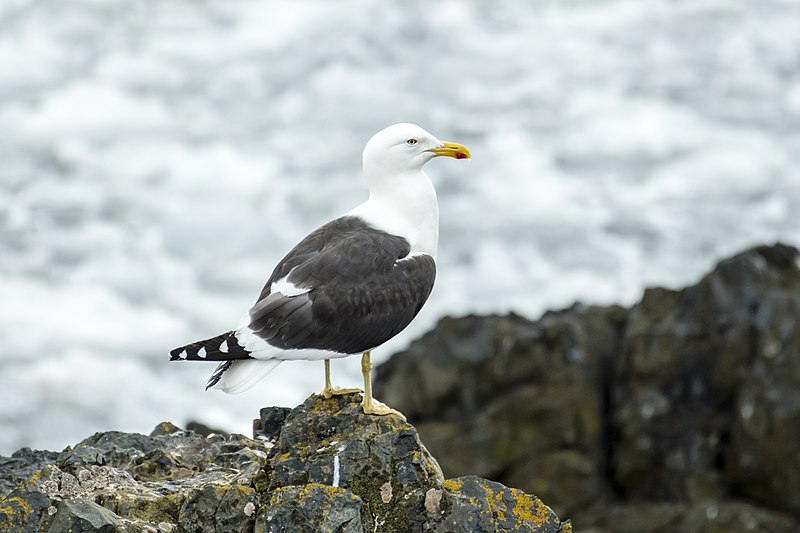
The Kelp Gull is a majestic bird that can be found on coasts and islands of the Southern Hemisphere. It has a beautiful plumage consisting of black, white, and grey feathers with brown eyes.
Its wingspan ranges between 91-122 cm (36 – 48 inches). The nominate L. d. dominicanus subspecies is most commonly seen around South America, parts of Australia, and New Zealand where it goes by the name “black-backed gull” or “mollyhawk”.
These birds are omnivorous but tend to prefer fish as their primary food source while they also scavenge carrion when necessary.
To stand out from other seagulls during mating season they display vibrant courtship rituals which involve flying high in circles over its nesting area flapping their wings dramatically before diving down into the water near potential mates.
Scientific classification:
| Kingdom | Animalia |
| Phylum | Chordata |
| Class | Aves |
| Order | Charadriiformes |
| Family | Laridae |
| Genus | Larus |
| Species | L. dominicanus |
Also Featured In: Birds of South African, Most Common Birds in South America Birds
4. Southern Giant Petrel
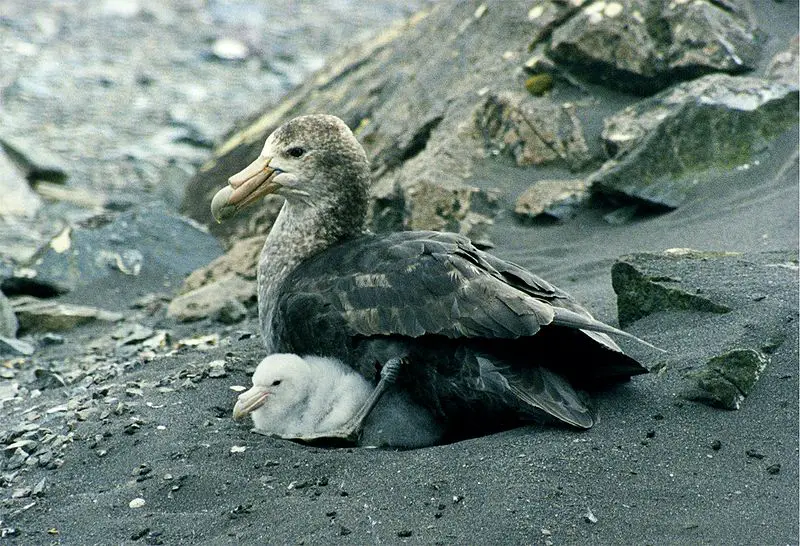
The Southern giant petrel is a large seabird native to the southern oceans, and it overlaps broadly with its similar counterpart, the Northern giant petrel.
Adults of both species can be distinguished by their bill-tip color: greenish in the south and yellowish in the north.
The Southern giant petrel also goes by other names such as Antarctic giant petrel, Giant fulmar, Stinker, or Stinkpot.
These birds are around 75 cm (30 inches) long on average and have striking white plumage combined with brown wings that give them an impressive appearance while they soar through skies above open waters searching for food like fish, krill, and squid – which they can catch up to 100 meters below sea level.
Scientific classification:
| Kingdom | Animalia |
| Phylum | Chordata |
| Class | Aves |
| Order | Procellariiformes |
| Family | Procellariidae |
| Genus | Macronectes |
| Species | M. giganteus |
Also Featured In: Uganda Birds Species, Birds that Live in the Ocean
5. Ovenbird
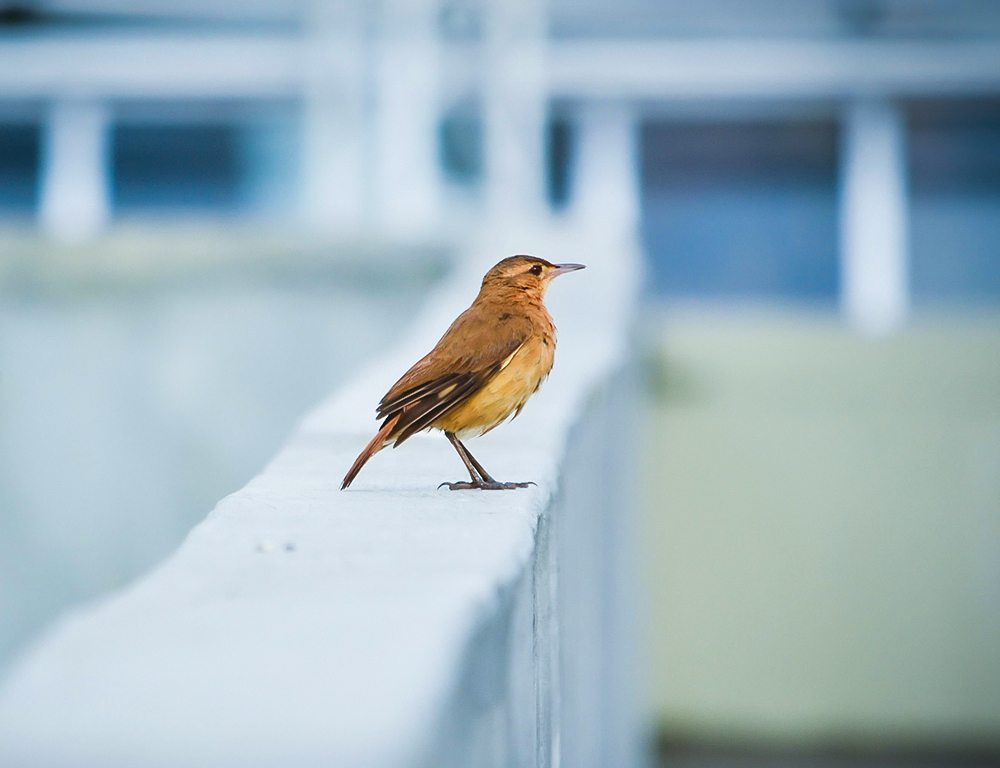
Ovenbirds are a family of small passerine birds found in Central and South America. They have around 315 species, divided into 70 genera. The most popular ovenbird is the Seiurus aurocapilla, which breeds in North America.
These birds typically inhabit wooded areas like forests or shrubland habitats, where they can forage for food such as insects and berries on the ground or low-lying vegetation.
Ovenbirds also build unique nests that resemble an oven with a side entrance—hence their name.
With its bright colors, melodic call, and interesting nesting habits it’s no wonder why this bird has become so popular with birdwatchers worldwide.
Scientific classification:
| Kingdom | Animalia |
| Phylum | Chordata |
| Class | Aves |
| Order | Passeriformes |
| Infraorder | Tyrannides |
| Family | Furnariidae Gray, 1840 |
Also Featured In: Birds of Argentina, Birds that Migrate through Illinois in the Spring
6. Black-Necked Swan
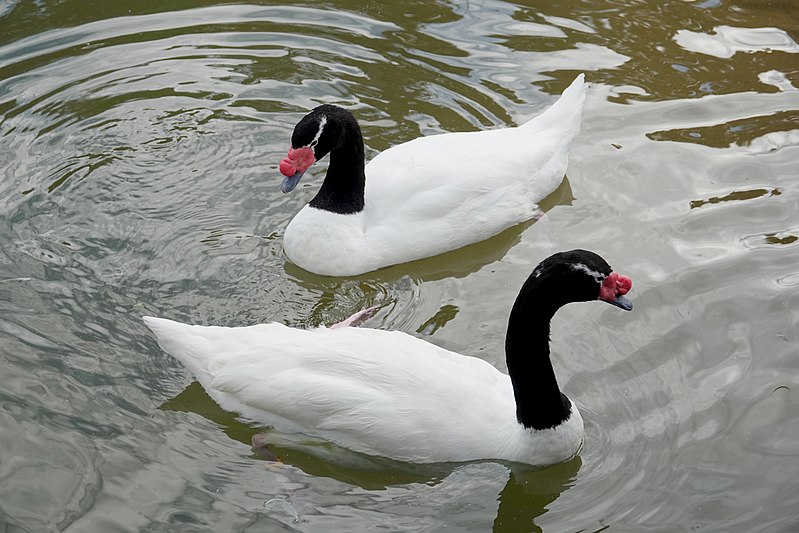
The Black-necked Swan is a species of waterfowl belonging to the Cygnini tribe in subfamily Anserinae. They are native to Argentina, Brazil, Chile, Uruguay and the Falkland Islands.
The black-necked swan has been known to stand out from other members of its family due to its unique appearance; it has an all white body with a black neck and head.
This bird typically lives near freshwater bodies such as lakes or rivers but can also be found on ocean coasts during some seasons when food sources become scarce.
It mainly feeds on algae and aquatic plants though occasionally eats small fish too for extra nutrition.
Overall this gorgeous bird stands proud amongst many others because of their stunning colour combination which makes them unmistakable.Scientific classification:
| Kingdom | Animalia |
| Phylum | Chordata |
| Class | Aves |
| Order | Anseriformes |
| Family | Anatidae |
| Genus | Cygnus |
| Species | C. melancoryphus |
7. Brown-Hooded Gull
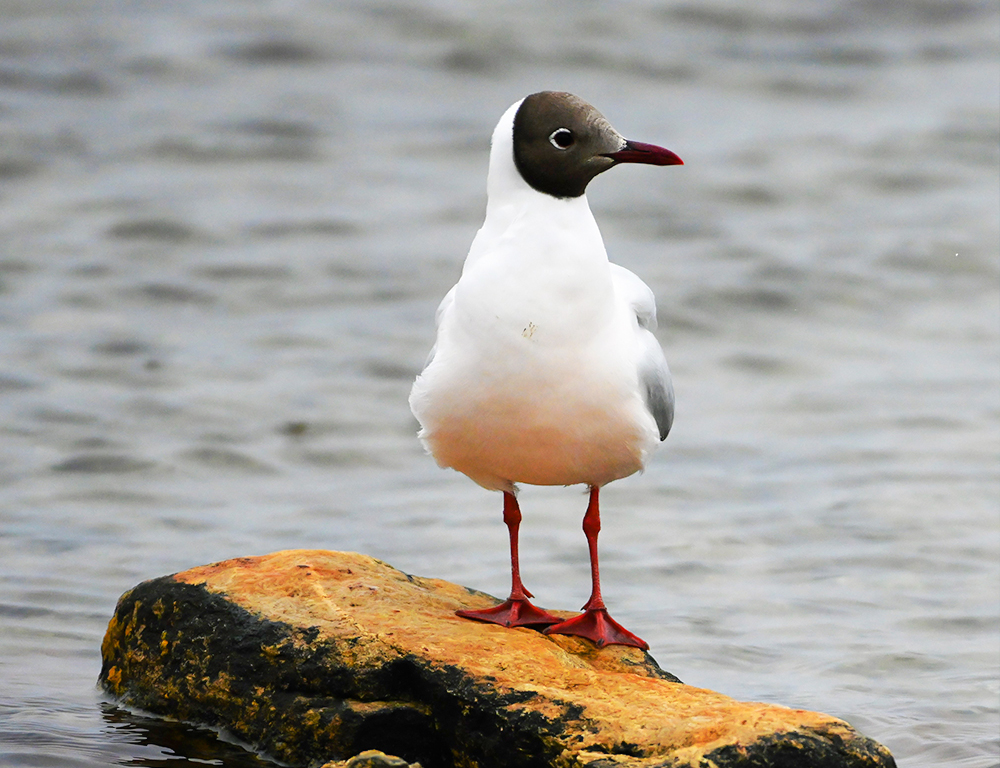
The brown-hooded gull is a species of white seabird found in South America. It has a red beak and feet, and its most distinctive feature is the dark brown head with a white semicircle around the back part of each eye.
The bird’s scientific name, Chroicocephalus maculipennis translates to ‘spotted wings’ which refers to its spotted wing feathers.
This gull can typically be seen along coasts or near bodies of water where it feeds on fish, insects, crustaceans, and mollusks.
They are also known for their long-distance migrations from Argentina up to Uruguay during winter months when food becomes harder to find closer by shorelines.
To protect themselves they build nests high above ground usually made out of twigs lined with grass and other materials nearby them like seaweed or shells that they scavenge while searching for prey underwater throughout daylight hours
Scientific classification:
| Kingdom | Animalia |
| Phylum | Chordata |
| Class | Aves |
| Order | Charadriiformes |
| Family | Laridae |
| Genus | Chroicocephalus |
| Species | C. maculipennis |
8. Chiloé Wigeon
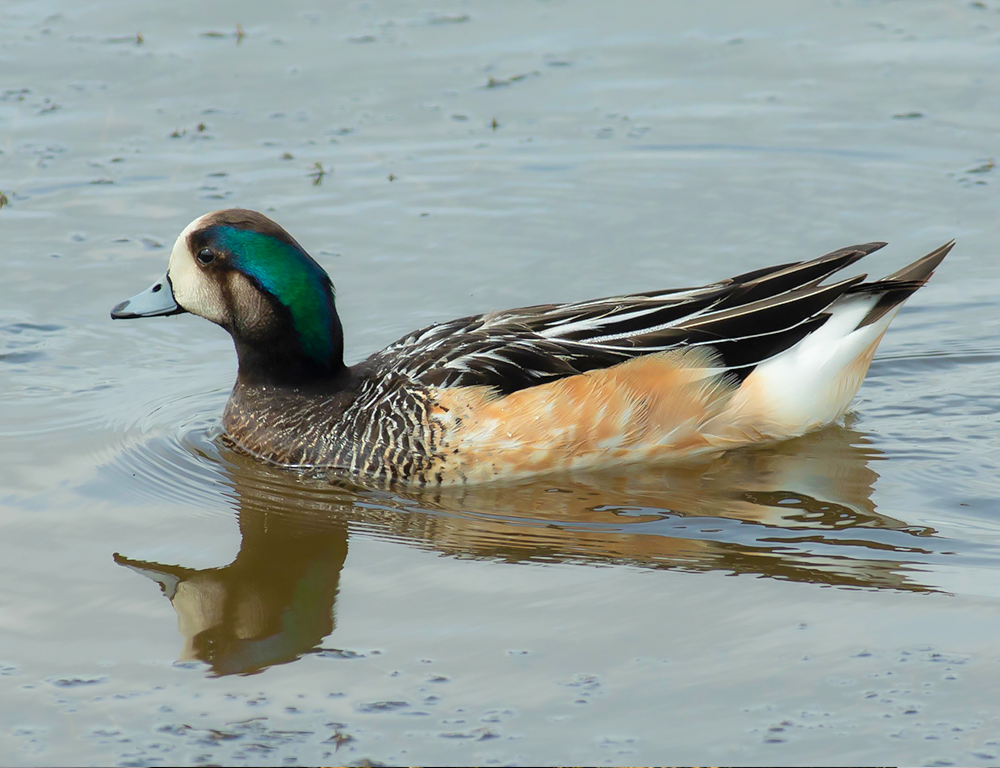
The Chiloé Wigeon is a species of dabbling duck native to the southern parts of South America, including the eponymous Chiloé Archipelago. It has an unmistakable plumage – brown and white with light gray patches on its head and neck.
The wigeon can be found in freshwater lakes, marshes, swamps, and lagoons throughout its range. They mostly feed on aquatic vegetation but have also been observed eating insects.
This species is sometimes known as Pato Overo (“piebald duck”) or Pato Real (“royal duck”) due to their striking coloration which stands out among other waterfowls in the region.
Although not globally threatened at present, local populations may be declining owing to hunting pressure and habitat destruction caused by human activities such as agriculture expansion and wetland drainage projects
Scientific classification:
| Kingdom | Animalia |
| Phylum | Chordata |
| Class | Aves |
| Order | Anseriformes |
| Family | Anatidae |
| Genus | Mareca |
| Species | M. sibilatrix |
9. Magellanic Penguin
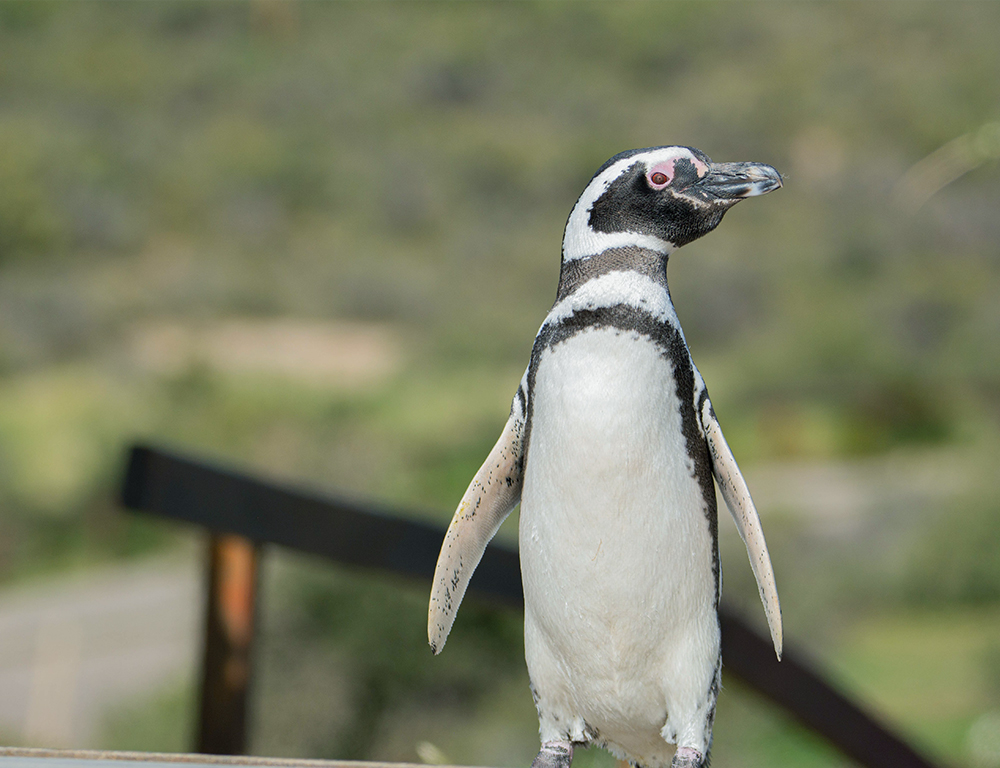
The Magellanic penguin is a beloved South American bird that breeds in coastal Patagonia, including Argentina, Chile, and the Falkland Islands. It migrates to Brazil and Uruguay occasionally as far north as Espirito Santo.
Vagrants have even been spotted in El Salvador, Antarctica’s Avian Island, and Australia/New Zealand.
This species of penguin is perhaps most recognizable for its striking black-and-white plumage – it has an entirely white underbelly with two distinctive stripes across its back which are black above and white below.
Additionally, they possess large pinkish feet which act like paddles when swimming underwater; these birds can swim up to 20 mph.
The Magellanic Penguin typically lives around 15 years but some may live longer due to their strong social bonds within colonies.
All in all this majestic creature makes quite the statement both on land or sea – making them a unique addition to our planet’s wildlife population.
Scientific classification:
| Kingdom | Animalia |
| Phylum | Chordata |
| Class | Aves |
| Order | Sphenisciformes |
| Family | Spheniscidae |
| Genus | Spheniscus |
| Species | S. magellanicus |
10. Skuas
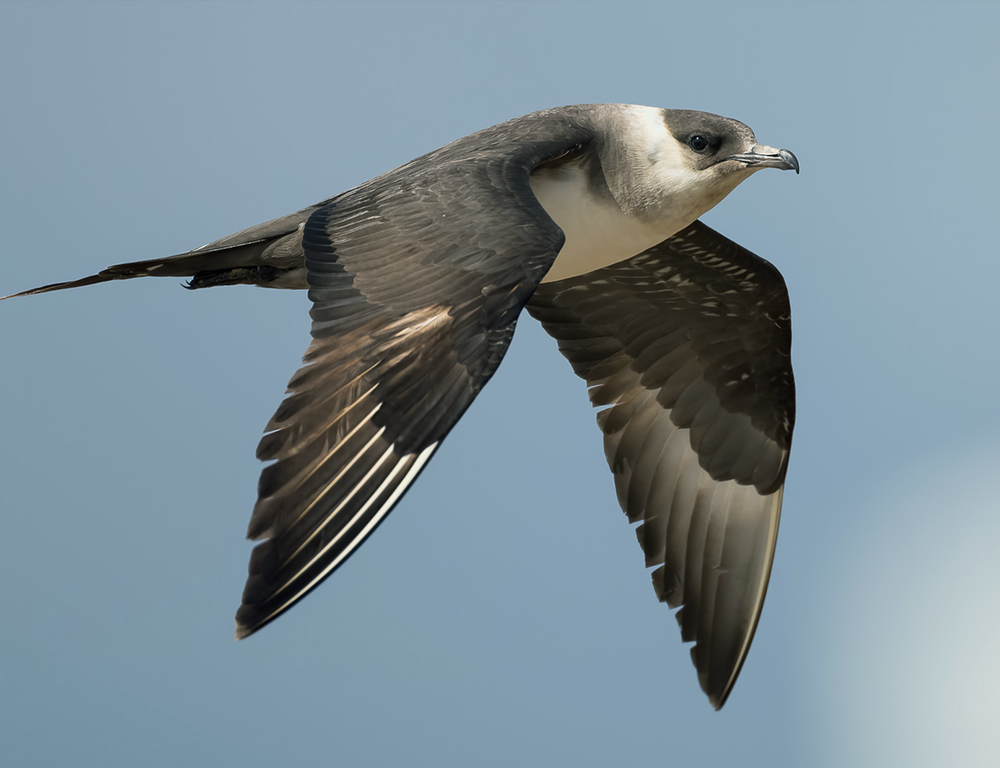
Skuas are a group of predatory seabirds with seven species, all belonging to the genus Stercorarius.
They are also known as “Jaegers” in North America and their name originates from the Faroese word for Great Skua – skúgvur.
These birds typically inhabit coastal areas or open oceans where they feed on fish, krill, and other marine creatures.
Skuas can be distinguished by their pointed wings which help them fly long distances while hunting food.
Their distinctive coloration varies depending on age and habitat but generally includes greyish brown upperparts and white underparts with black streaks along its belly area.
The overall size ranges from 24-40 cm making these one of the larger sea bird species.
Scientific classification:
| Kingdom | Animalia |
| Phylum | Chordata |
| Class | Aves |
| Order | Charadriiformes |
| Suborder | Lari |
| Family | Stercorariidae Gray, 1871 |
| Genus | Stercorarius Brisson, 1760 |
Also Featured In: Birds of Morocco, Birds You’ll Find in the Sea
11. Upland Goose
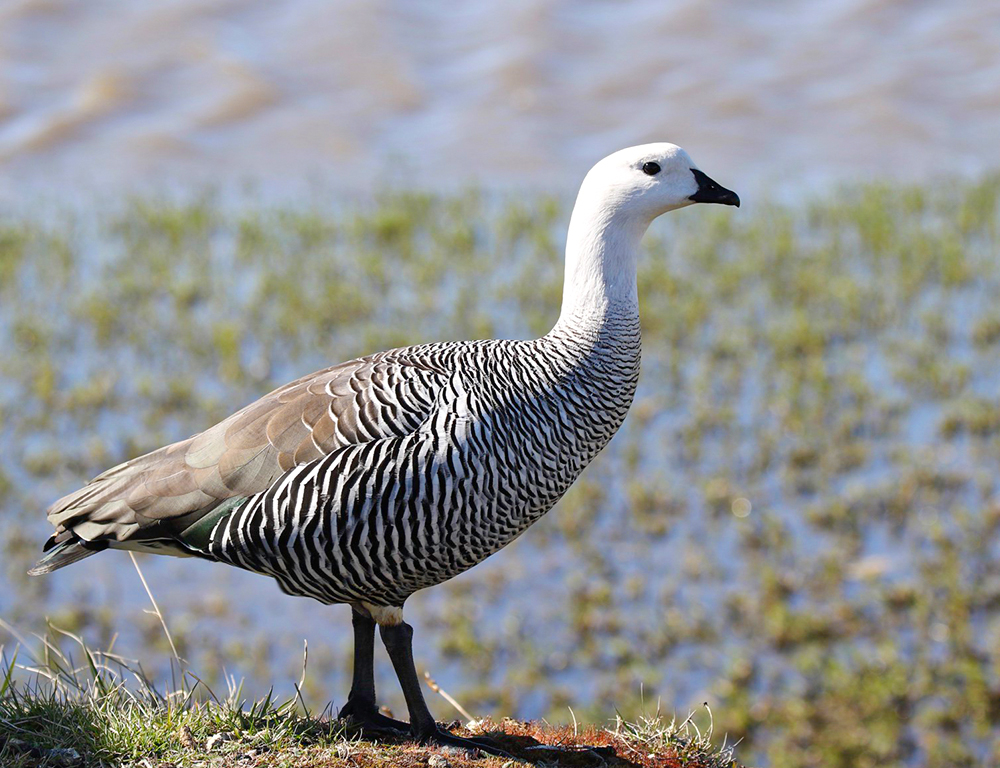
The Upland Goose, also known as the Magellan Goose, is a species of sheldgoose belonging to the Anatidae family.
With its similar habits and appearance to true geese, this bird has two recognized subspecies – Chloephaga picta leucoptera and C. p. picta which inhabit regions in South America such as Patagonia and Tierra del Fuego respectively.
They are highly sociable birds that live in small flocks or pairs on open grassland with access to water sources for bathing and twilight feedings when they hunt for food items like insects, worms, or mollusks.
Their feathers range from brownish-grey colours along their wings while white underparts give them an overall spotted effect making these birds very attractive creatures.
Scientific classification:
| Kingdom | Animalia |
| Phylum | Chordata |
| Class | Aves |
| Order | Anseriformes |
| Family | Anatidae |
| Genus | Chloephaga |
| Species | C. picta |
Also Featured In: Most Common Birds Found in Chile,
12. South American Tern
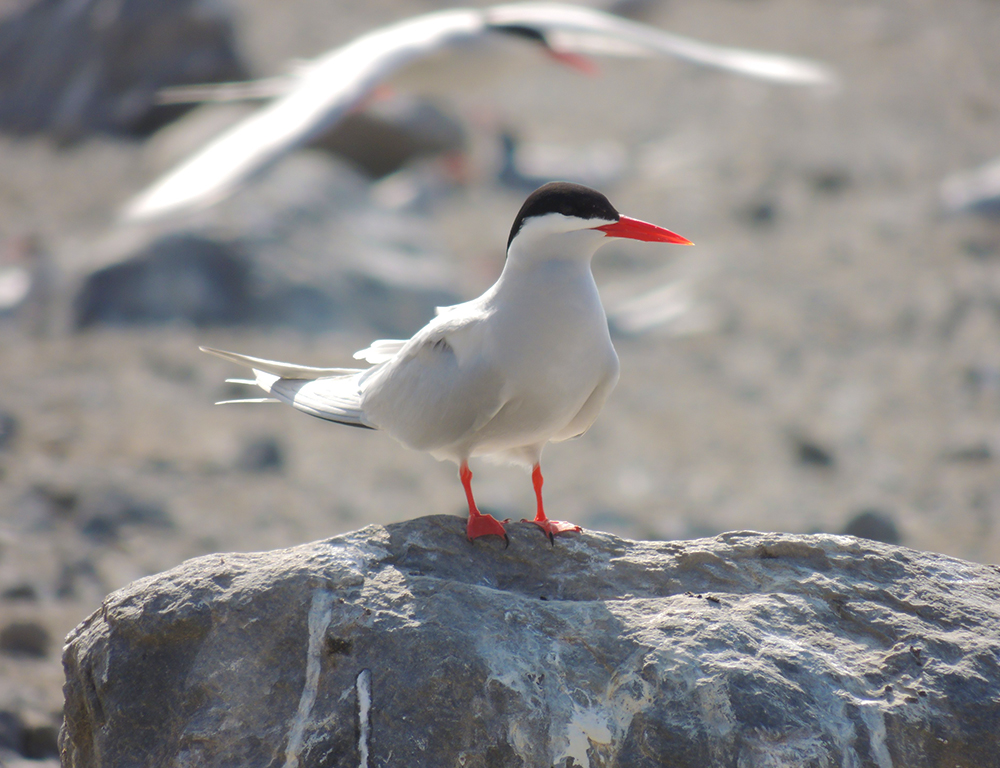
The South American tern is a species of seabird found in coastal regions stretching from the Falklands to Peru and Brazil.
True to its name, this bird has a swallow-like forked tail that helps it soar through the sky with ease.
It also has an impressive wingspan, making it quite easy to spot when flying overhead.
The most distinguishing characteristic of these birds is their bright yellow beak and feet which contrast against their white head and grey body plumage.
They are considered one of the most common terns in their range due to their adaptability across different habitats such as mudflats and beaches or even grassy areas near riversides or lakeshores.
While they usually reside close enough inland so as not to come into contact with humans directly, they can often be seen soaring high above our heads on sunny days.
Scientific classification:
| Kingdom | Animalia |
| Phylum | Chordata |
| Class | Aves |
| Order | Charadriiformes |
| Family | Laridae |
| Genus | Sterna |
| Species | S. hirundinacea |
Also Featured In: Uruguay birds,
13. Pantanal Snipe
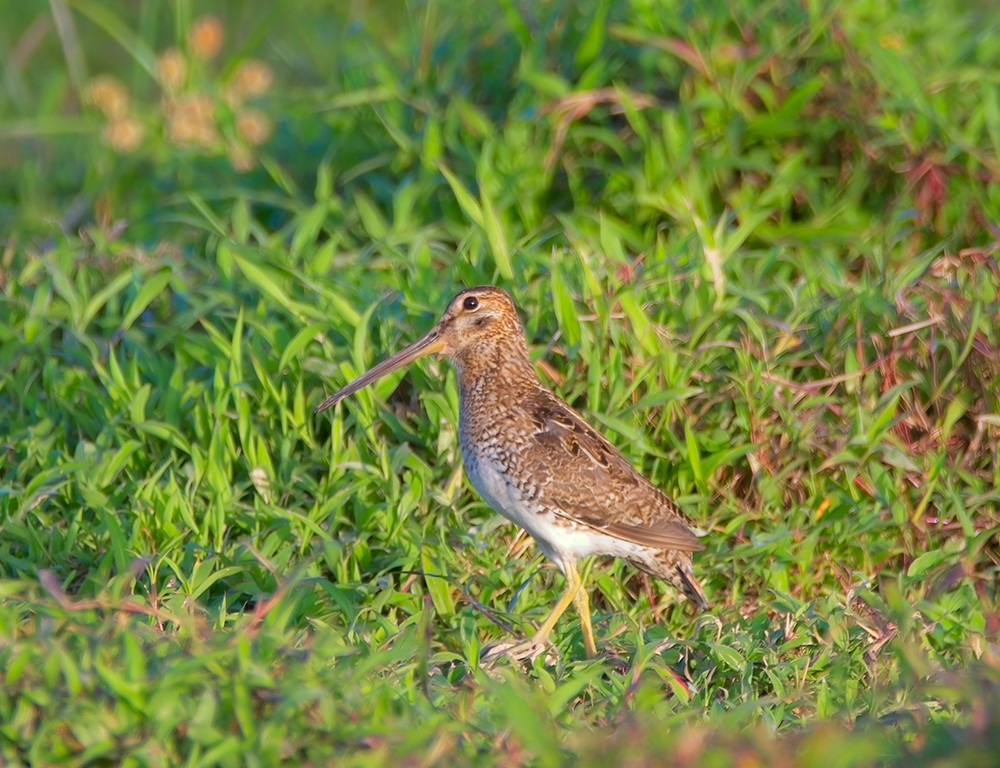
The Pantanal snipe is a member of the sandpiper family and it can be found in Trinidad and Tobago, the Falkland Islands, as well as most mainland countries in South America except Chile.
It has an interesting taxonomic history due to its close relationship with other New World Snipes such as the genus Gallinago.
This wading bird typically lives near wetlands or agricultural fields where they feed off small crustaceans like worms and insects.
They are very shy birds that usually fly out of reach when disturbed by humans or predators.
Their coloring helps them blend into their environment which makes them difficult to spot while they search for food during low tide periods.
The Pantanal snipe is a vital part of many ecosystems throughout South America, so conservation efforts must continue to ensure this species remains healthy for future generations.
Scientific classification:
| Kingdom | Animalia |
| Phylum | Chordata |
| Class | Aves |
| Order | Charadriiformes |
| Family | Scolopacidae |
| Genus | Gallinago |
| Species | G. paraguaiae |
14. Great Shearwater
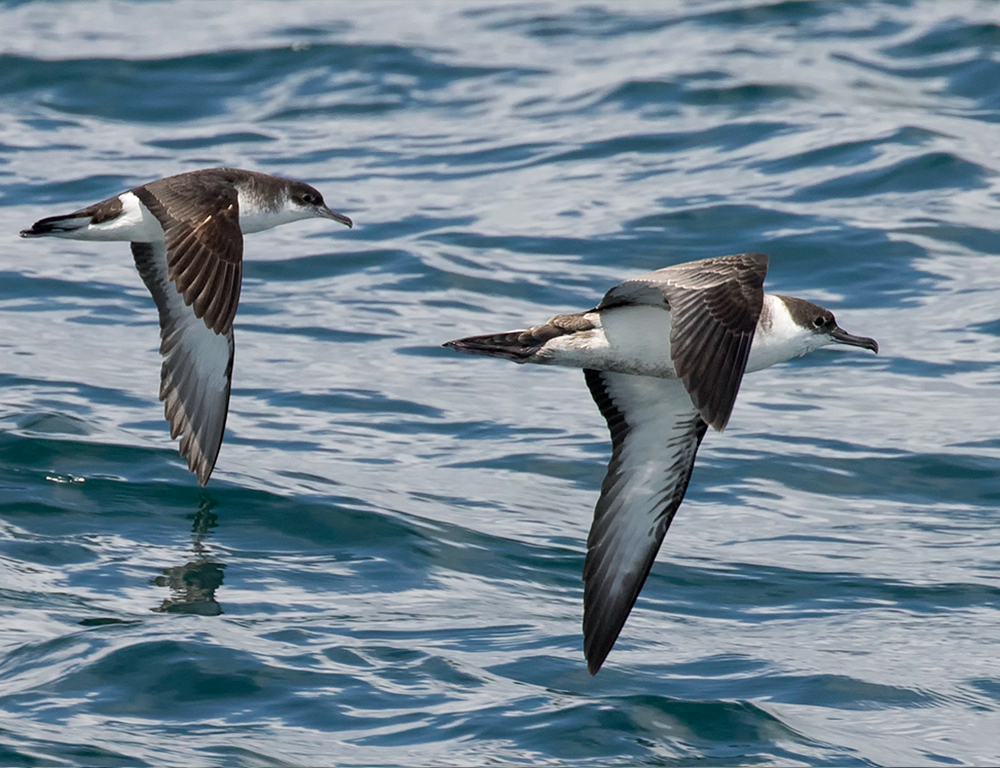
The Great Shearwater is a large seabird from the Procellariidae family. It breeds in colonies on rocky islands located in the South Atlantic, and during non-breeding season it can be found across most of the Atlantic Ocean.
It was first described by Irish naturalist Bernard O’Reilly in 1818 under its scientific name ‘Procellaria gravis’.
This bird has pale grey upper wings with a white underside that may sometimes show brownish markings around its neck area.
Its diet consists mainly of fish but also small squid, crustaceans, and mollusks which they catch by surface plunging or pursuit diving while flying low over water surfaces.
The great shearwater is threatened to some extent due to human activities like fishing using gill nets, destruction of habitat for development projects as well as plastic debris ingested through feeding which affects their health adversely leading to mortality rates at an alarming rate making them vulnerable species.
Scientific classification:
| Kingdom | Animalia |
| Phylum | Chordata |
| Class | Aves |
| Order | Procellariiformes |
| Family | Procellariidae |
| Genus | Ardenna |
| Species | A. gravis |
Also Featured In: Cabo Verde birds, Birds that Live in Newfoundland and Labrador
15. White-Collared Swift
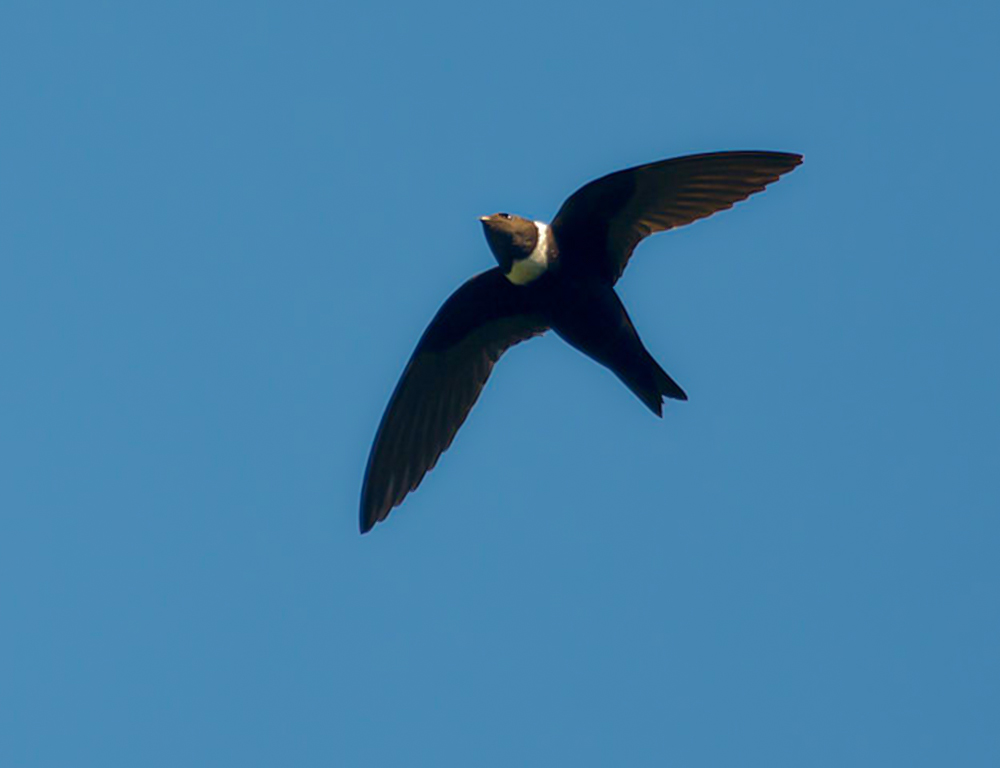
The White-collared Swift is a species of bird belonging to the subfamily Cypseloidinae in the swift family Apodidae.
It can be found throughout Mexico, Central and South America, as well as some Caribbean islands like Trinidad and the Antilles.
This unique avian stands out from other swifts due to its size; it is larger than most others in its range.
Nine recognized subspecies vary by geographical location and other morphological features such as tail length or wing shape.
The white-collared swift feeds mainly on flying insects which it catches midair using their wide wingspan for stability while swooping through the sky at high speeds over forests, mountainsides or open areas near bodies of water.
They usually roost together during nighttime hours but migrate long distances depending on seasonality changes in temperature and food availability.
Scientific classification:
| Kingdom | Animalia |
| Phylum | Chordata |
| Class | Aves |
| Order | Apodiformes |
| Family | Apodidae |
| Genus | Streptoprocne |
| Species | S. zonaris |
Also Featured In: Grenada Birds,
16. Black-Browed Albatross
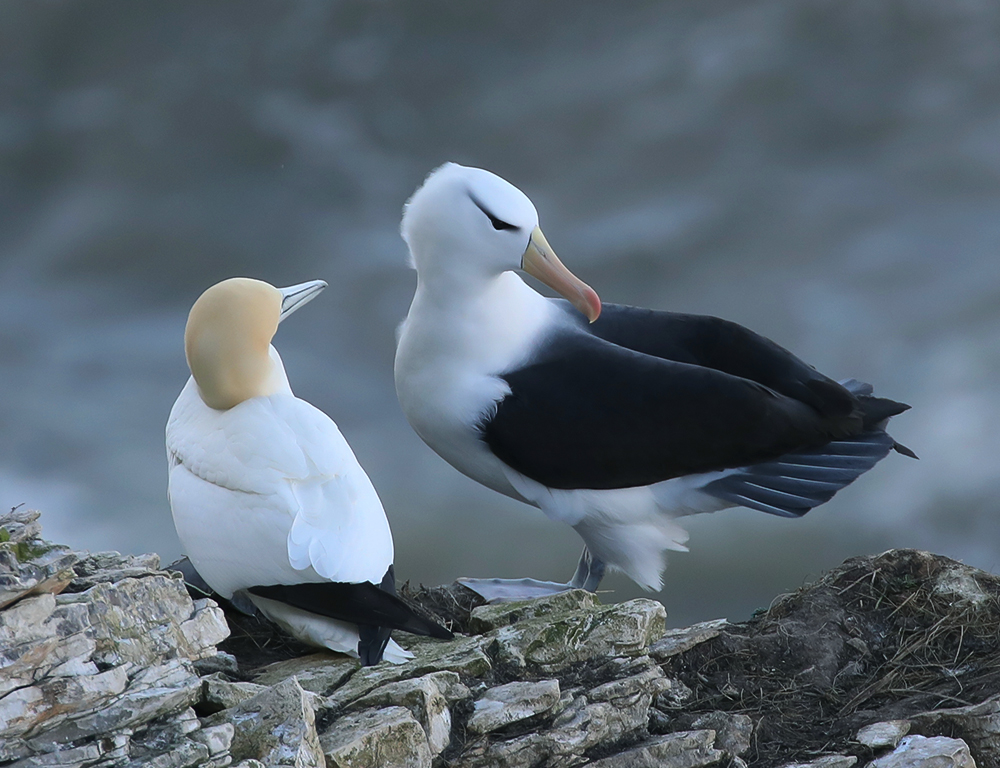
The Black-browed Albatross is a majestic seabird that belongs to the albatross family known as Diomedeidae.
It is an impressive bird, with its black beak and brow contrasting against the white plumage on its wings and body.
The most widespread member of this group, it can often be seen flying around oceans in different parts of the world.
These birds share many features with other members of their order Procellariiformes, such as shearwaters, fulmars, storm petrels, and diving petrels; they all have long wingspans for gliding effortlessly above water surfaces.
They feed mainly by scavenging or hunting small fish near the sea surface while flying low over the waters.
Its population has unfortunately declined due to commercial fishing vessels which attract them closer to shore resulting in entanglement into fishing nets leading them towards mortality.
Scientific classification:
| Kingdom | Animalia |
| Phylum | Chordata |
| Class | Aves |
| Order | Procellariiformes |
| Family | Diomedeidae |
| Genus | Thalassarche |
| Species | T. melanophris |
Also Featured In: Antarctica Birds, Birds that Live around Victoria
17. King Penguin
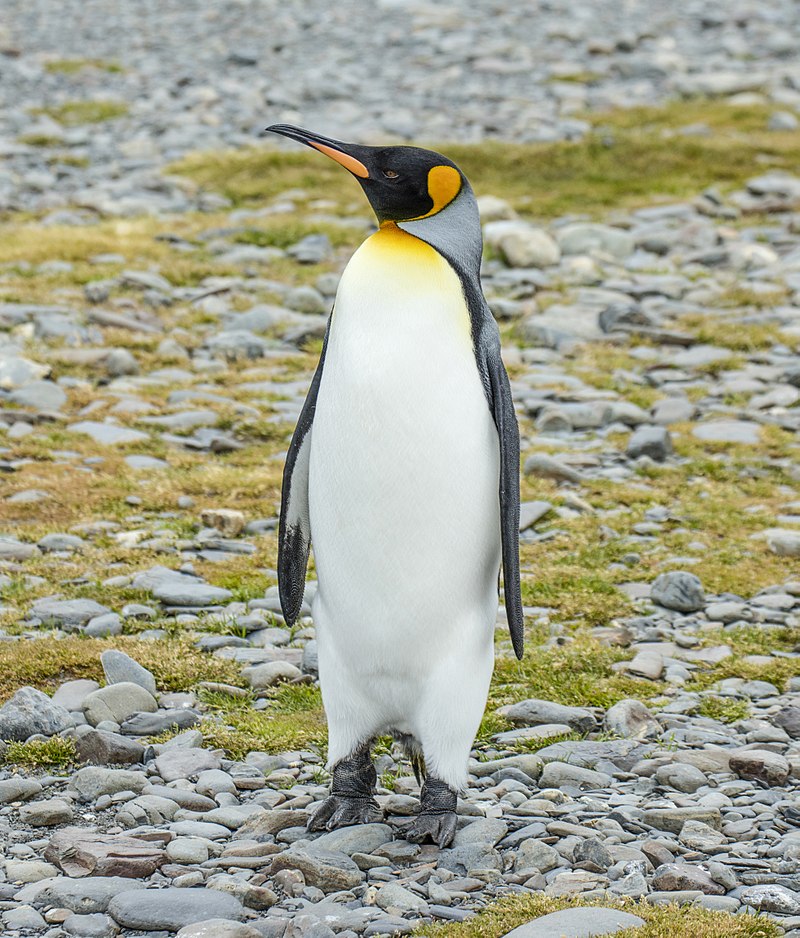
King penguins are majestic birds that live in the temperate and sub-Antarctic regions of the South Atlantic and Indian Oceans.
They stand up to 3 feet tall, making them smaller than their relative, the Emperor Penguin.
King Penguins have a distinctive two-toned orange and black plumage with white markings on their faces around their eyes which gives it an elegant look.
Unlike other species of penguin, they don’t migrate as much but stay close to breeding grounds year round living off from fish and squid found near shorelines or ice floes.
Their diet also consists of krill shrimp, small crustaceans such as copepods or amphipods eaten whole along with some occasional planktonic organisms like jellyfish for variety.
King Penguins form large colonies where males take part in incubation duties while females feed at sea for weeks at a time during mating season.
Scientific classification:
| Kingdom | Animalia |
| Phylum | Chordata |
| Class | Aves |
| Order | Sphenisciformes |
| Family | Spheniscidae |
| Genus | Aptenodytes |
| Species | A. patagonicus |
18. Brown Skua
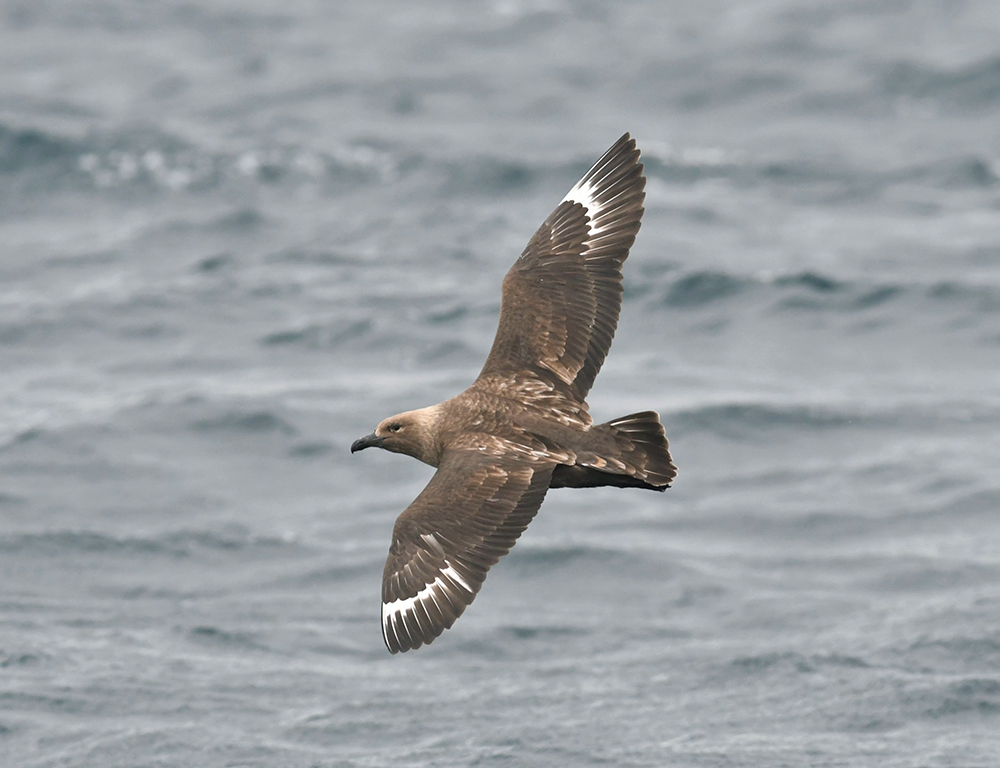
The brown skua is a large seabird found in subantarctic and Antarctic regions, often moving further north to find food when not breeding.
It goes by many names including the Antarctic Skua, Southern Great Skua, or Hākoakoa (Māori).
Its taxonomy has been disputed with some believing it should be split into two or three species like Falkland Skuas.
The Brown Skuas are mostly dark grey-brown on top with white bellies and have long wings that enable them to fly great distances over vast oceans searching for food.
They feed mainly on fish but also scavenge from other animals’ kills such as penguins and petrels.
In their natural environment, they form strong social bonds that help protect their young ones against predators while nesting near colonies of birds in the grasslands surrounding Antarctica’s coasts.
Scientific classification:
| Kingdom | Animalia |
| Phylum | Chordata |
| Class | Aves |
| Order | Charadriiformes |
| Family | Stercorariidae |
| Genus | Stercorarius |
| Species | S. antarcticus |
Also Featured In: Most Common Birds in Stewart Island, Common Birds Found near Saint Helena
19. Gentoo Penguin
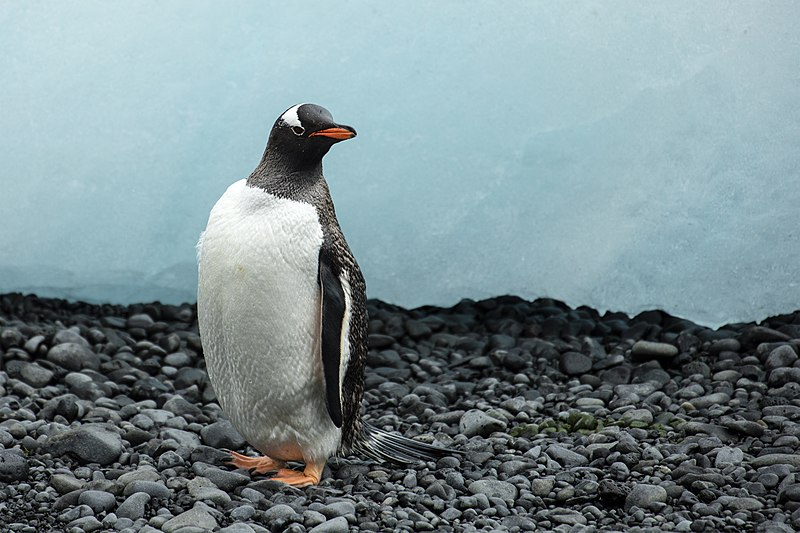
Gentoo penguins are an iconic species of birds found in the Falkland Islands. They have a distinctive black and white plumage, with a bright orange beak and feet.
The gentoo is one of three closely related species the Adélie Penguin (P. adeliae) and chinstrap penguin (P. antarcticus) and they can all be seen co-existing in their natural habitat near open water or on ice shelves around Antarctica, including the South Shetlands, Orkneys, South Georgia islands, Kerguelen Islands and Macquarie Island to name just a few places.
This sociable bird is known for its loud call which sounds like “gentooooo”; it also makes other vocalizations such as honks during courtship displays.
Gentoos prefer to live in large colonies but will often nest alone or form small groups when needed.
With climate change having an increasingly negative effect on Antarctic habitats these days it’s more important than ever that we protect this fascinating animal so future generations may enjoy them too.
Scientific classification:
| Kingdom | Animalia |
| Phylum | Chordata |
| Class | Aves |
| Order | Sphenisciformes |
| Family | Spheniscidae |
| Genus | Pygoscelis |
| Species | P. papua |
Also Featured In: Birds That Live In Heard Island and McDonald Islands,
20. Southern Rockhopper Penguin
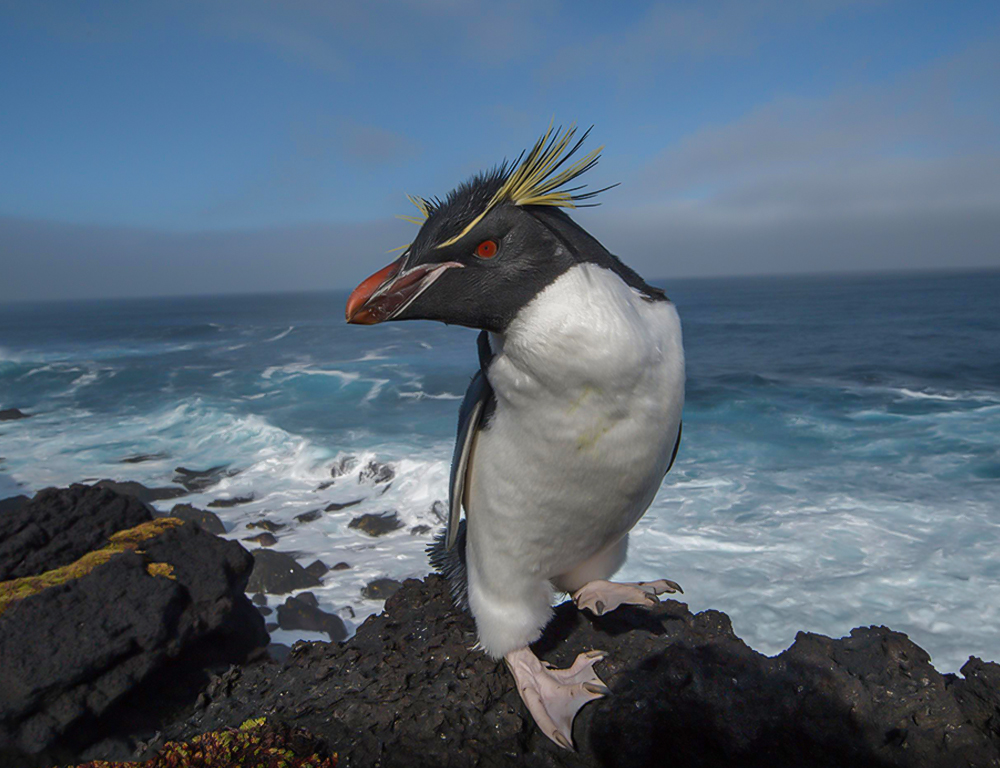
The Southern rockhopper penguin is a species of rockhopper known for its distinct yellow crest. It lives in the subantarctic waters of the western Pacific and Indian Oceans, as well as around the southern coasts of South America.
First described by English naturalist George Edwards in 1743, this medium-sized seabird has black upperparts that contrast against white underparts and face patches. They have very short red bills with orange eyespots on each side.
The birds are highly social creatures who form large colonies near coastal cliffs during the breeding season to raise their young chicks together.
In winter they move offshore onto pack ice where they feed mainly on small fish such as anchovies and squid.
Despite being endangered due to habitat destruction, these remarkable animals continue to thrive today thanks largely to conservation efforts worldwide.
Scientific classification:
| Kingdom | Animalia |
| Phylum | Chordata |
| Class | Aves |
| Order | Sphenisciformes |
| Family | Spheniscidae |
| Genus | Eudyptes |
| Species | E. chrysocome |
21. Yellow-Billed Pintail
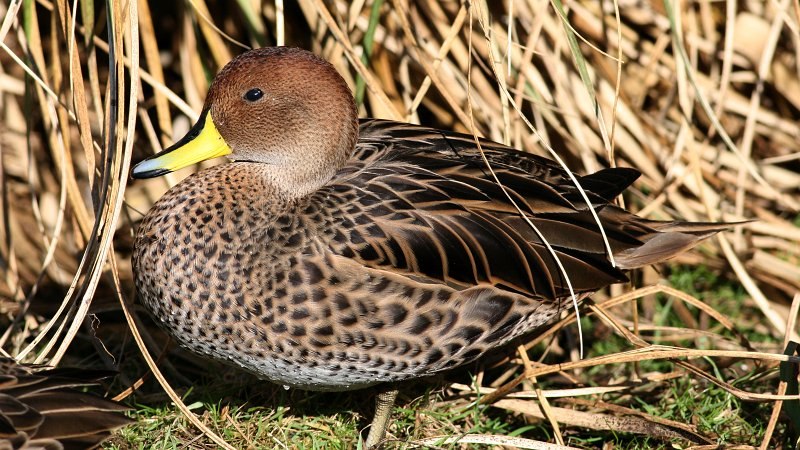
The Yellow-billed Pintail is a South American dabbling duck of the genus Anas, with three described subspecies.
It was formally identified by German naturalist Johann Friedrich Gmelin in 1789 and placed among all ducks, geese and swans in the same genus.
The species has long legs and neck which help them to feed on both land or water surfaces easily. Its tail feathers are yellowish white but its bill is bright yellow giving it an attractive look.
These birds can be found mostly in open wetlands like marshes, ponds, lakes etc., flying very low over shallow waters while searching for food such as small insects or even lizards & worms.
They breed during summer months near their habitat making nests out of reeds and grasses before laying 6-9 eggs each time.
Though not considered endangered yet conservation efforts must be taken to protect these beautiful creatures from disappearing forever.Scientific classification:
| Kingdom | Animalia |
| Phylum | Chordata |
| Class | Aves |
| Order | Anseriformes |
| Family | Anatidae |
| Genus | Anas |
| Species | A. georgica |
22. Dolphin Gull
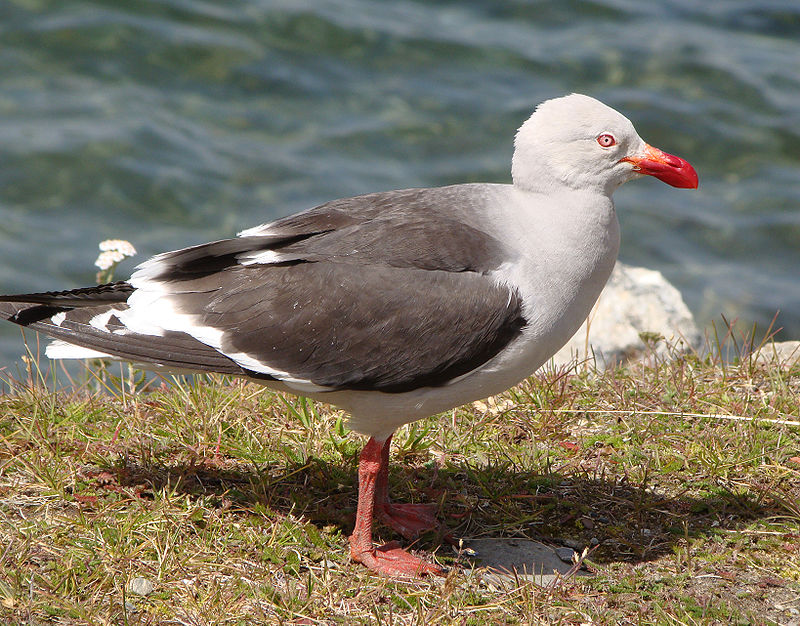
The Dolphin Gull is a medium-sized gull native to southern Chile, Argentina and the Falkland Islands. It has greyish feathers with darker wings, a yellow bill and legs of varying lengths – depending on its age.
They inhabit rocky, muddy and sandy shores near seabird colonies where they search for food such as fish, crabs or other aquatic creatures.
The adults are particularly good swimmers who can dive underwater in pursuit of their prey; whereas the young birds prefer scavenging from shoreline garbage dumps.
Dolphins Gulls form large breeding colonies during which time both males and females take part in elaborate courtship rituals to attract mates followed by nesting activities like incubating eggs together before raising chicks together too.Scientific classification:
| Kingdom | Animalia |
| Phylum | Chordata |
| Class | Aves |
| Order | Charadriiformes |
| Family | Laridae |
| Genus | Leucophaeus |
| Species | L. scoresbii |
Also Featured In: Gulls Species, Common Birds that Live around Ushuaia
23. Rock Shag
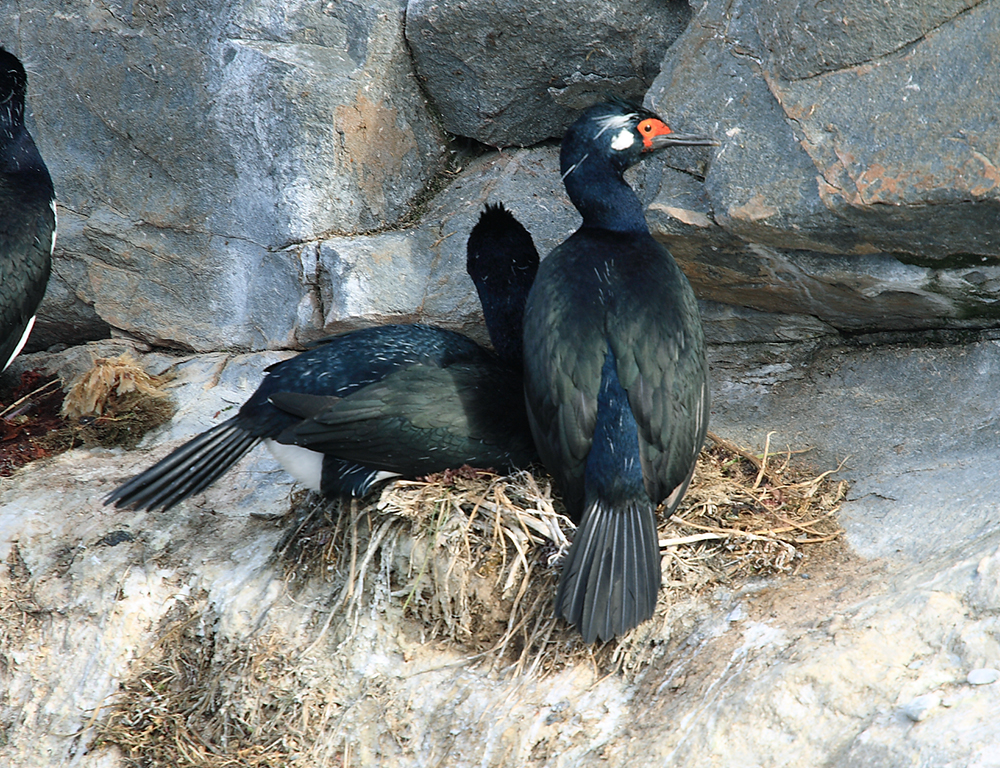
The Rock Shag is an aquatic bird found in the southernmost parts of South America, from Valdivia in Chile to Punta Tombo in Argentina. In winter, some individuals may even reach Santiago, Chile, and Uruguay on both coasts.
It has a blackish-brown plumage with white patches around its wings and neck area. Its beak is hooked at the end and it also features yellow eyes and legs.
The Rock Shag feeds mainly on fish but can also prey upon squid or crustaceans depending on the availability of food sources near their breeding grounds.
They are often seen swimming close to shorelines searching for food while using their feet as paddles.
Their habitat consists mostly of rocky shores with coastal cliffs where they can build nests amongst rocks or trees such as cypresses near water bodies like lagoons or estuaries which shelter them during high tides when fishing becomes impossible due to strong currents.
Scientific classification:
| Kingdom | Animalia |
| Phylum | Chordata |
| Class | Aves |
| Order | Suliformes |
| Family | Phalacrocoracidae |
| Genus | Leucocarbo |
| Species | L. magellanicus |
Also Featured In: Cormorant Species,
24. Austral Thrush
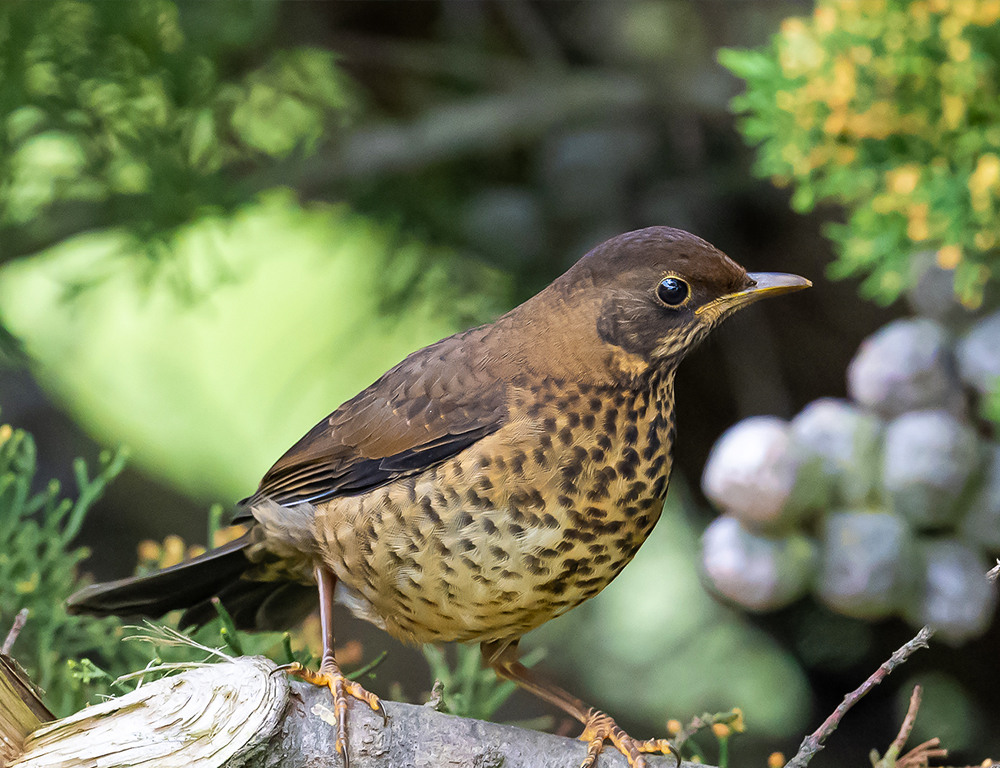
The Austral Thrush is a beautiful bird, native to Southern South America and the Falkland Islands.
It has a black body with white spots on its wings, yellow bill, and feet, along with orange eyes which make it very distinctive.
The two subspecies of this bird are known as the Magellan thrush (T.f magellanicus) from southern Argentina and Chile; while the other subspecies is called the Falkland thrush (T.f falcklandii).
This species makes its habitat in thickets or open woodland areas where they feed mainly on insects by foraging through leaf litter such as worms or millipedes etc., They also consume fruits available in their environment.
These birds form monogamous pairs during breeding season that breed once a year producing 3-4 eggs at most each time but usually only one survives due to competition among siblings when food resources become scarce.
Scientific classification:
| Kingdom | Animalia |
| Phylum | Chordata |
| Class | Aves |
| Order | Passeriformes |
| Family | Turdidae |
| Genus | Turdus |
| Species | T. falcklandii |
Also Featured In: Thrush Species, Patagonia Birds You Should Know
25. Grass Wren
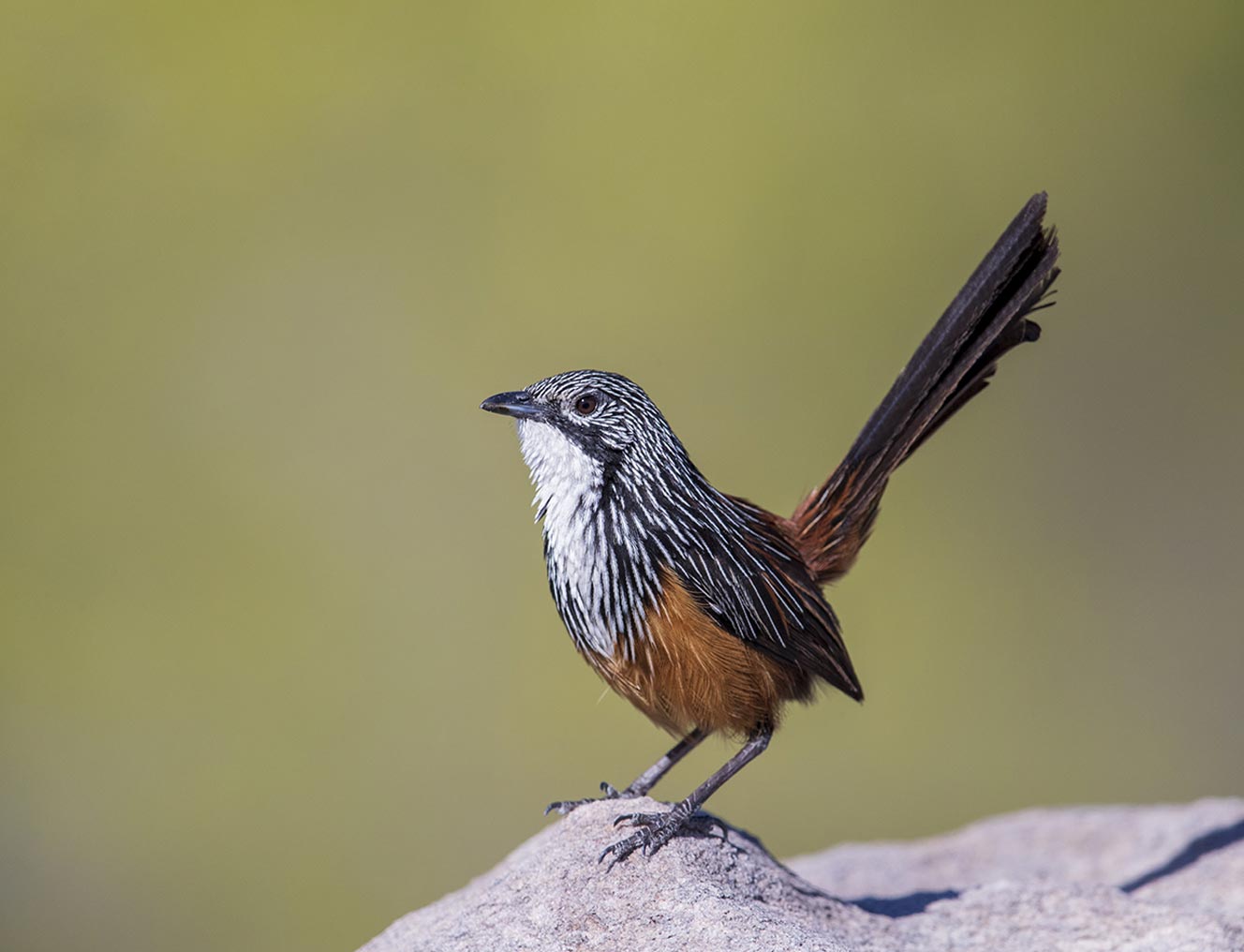
The Grass Wren is a small bird native to Central and South America. It belongs to the family Troglodytidae, which includes wrens and other songbirds.
The species was first described in 1790 by English ornithologist John Latham, who gave it its scientific name Cistothorus platensis.
They inhabit grassy habitats such as pastures, meadows, or savannas where they can find their favorite food of insects and spiders.
Their plumage is mostly brownish grey with some white spots on the wings and back while their bill is short but strong enough for them to dig into soil looking for food items like tubers or seeds.
As well-known ground-dwelling birds, they are more often heard than seen as they search around close to the ground in thick vegetation coverings making them difficult subjects of study but also providing great joy when spotted.
Scientific classification:
| Kingdom | Animalia |
| Phylum | Chordata |
| Class | Aves |
| Order | Passeriformes |
| Family | Troglodytidae |
| Genus | Cistothorus |
| Species | C. platensis |
Also Featured In: Wrens Species,
26. Silver Teal
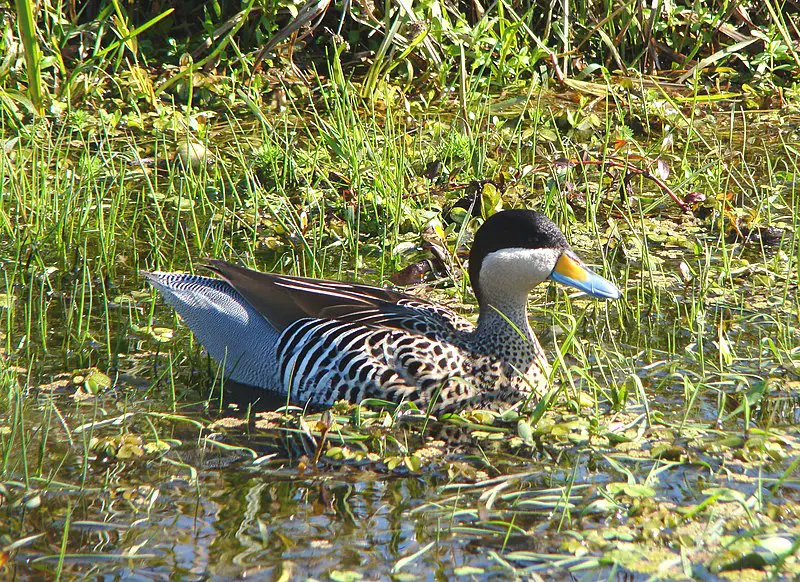
The silver teal is a species of dabbling duck found in South America. It prefers to nest in reed beds between April and June, laying 6-10 creamy-pink eggs which both parents will take part in raising the young.
This small bird lives on freshwater lakes and ponds where it can be seen swimming around with its flock, feeding mainly on vegetation such as seeds and aquatic plants.
In flight, they have distinctive white chest markings that stand out against their silvery brown body feathers making them easy to spot from afar.
Silver Teals are very sociable birds whose flocks may last for many years if not disturbed by predators or humans encroaching upon their environment.S
cientific classification:
| Kingdom | Animalia |
| Phylum | Chordata |
| Class | Aves |
| Order | Anseriformes |
| Family | Anatidae |
| Genus | Spatula |
| Species | S. versicolor |
Also Featured In: birds of teal, Silver Birds You Should Know
27. Yellow-Billed Teal
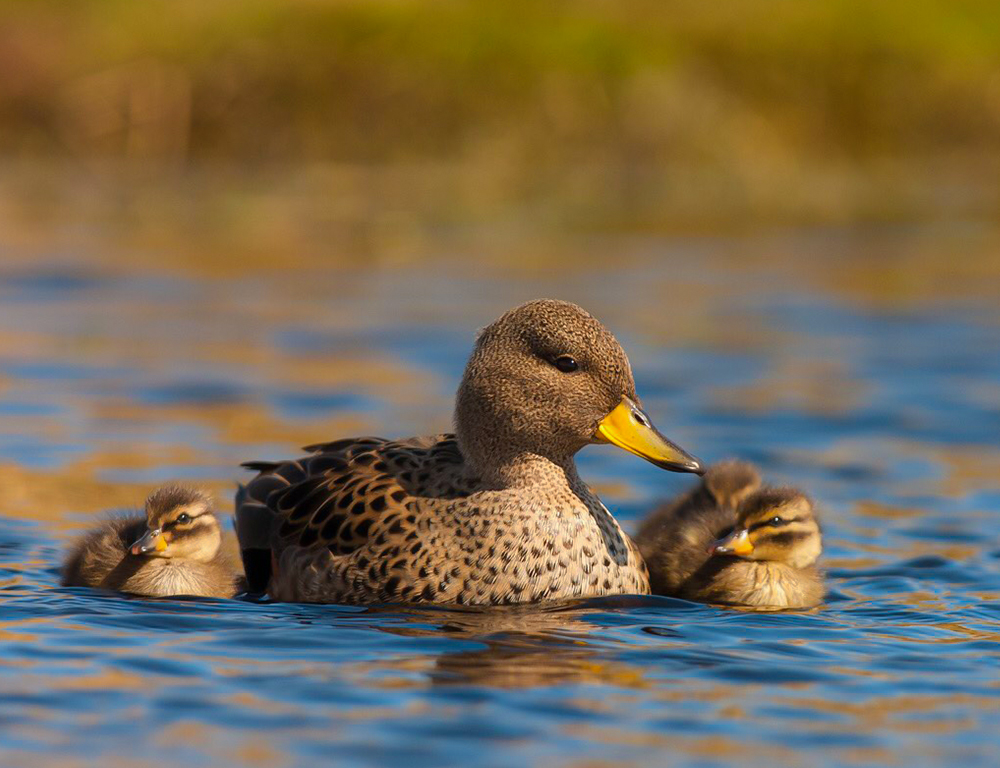
The Yellow-billed Teal is a species of duck native to South America. Found in Argentina, Chile, Peru, Bolivia, Uruguay, and Brazil as well as the Falkland Islands it has also been spotted in South Georgia where it was first recorded breeding in 1971.
Its scientific name is Anas flavirostris and like other teals belongs to the Nettion genus which includes true teals.
This bird can be recognised by its bright yellow bill with black markings around its eyes making them quite distinct from other ducks found in this region.
They have grey bodies with white patches on their wings and brownish underparts giving them an interesting look when seen up close or flying overhead.
Scientific classification:
| Kingdom | Animalia |
| Phylum | Chordata |
| Class | Aves |
| Order | Anseriformes |
| Family | Anatidae |
| Genus | Anas |
| Species | A. flavirostris |
28. Silvery Grebe
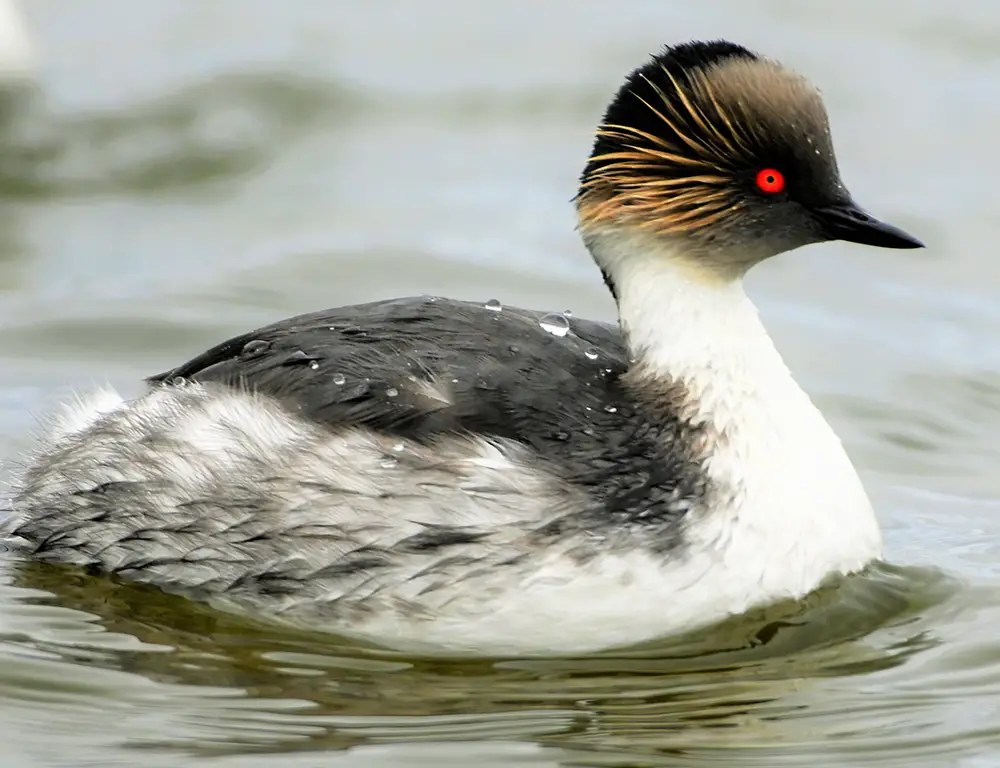
The Silvery Grebe is a freshwater bird found in the western and southern parts of South America. It can survive in altitudes of up to 4,000 meters and is even known to feed in saline lakes.
Measuring about 28 cm in length, this bird has two different subspecies with varying coloring on their heads.
The Silvery Grebe mainly feeds on small fish, crustaceans, and aquatic vegetation.
Their natural habitat is freshwater lakes where they build their nests among aquatic plants. The Silvery Grebe has a unique appearance with silvery-gray plumage and red eyes.
They are usually seen swimming on the surface of the water or diving to forage for food.
Their conservation status is currently listed as Least Concern.
Scientific classification:
| Kingdom | Animalia |
| Phylum | Chordata |
| Class | Aves |
| Order | Podicipediformes |
| Family | Podicipedidae |
| Genus | Podiceps |
| Species | P. occipitalis |
Also Featured In: Birds That Live around East Falkland,
29. Long-Tailed Meadowlark
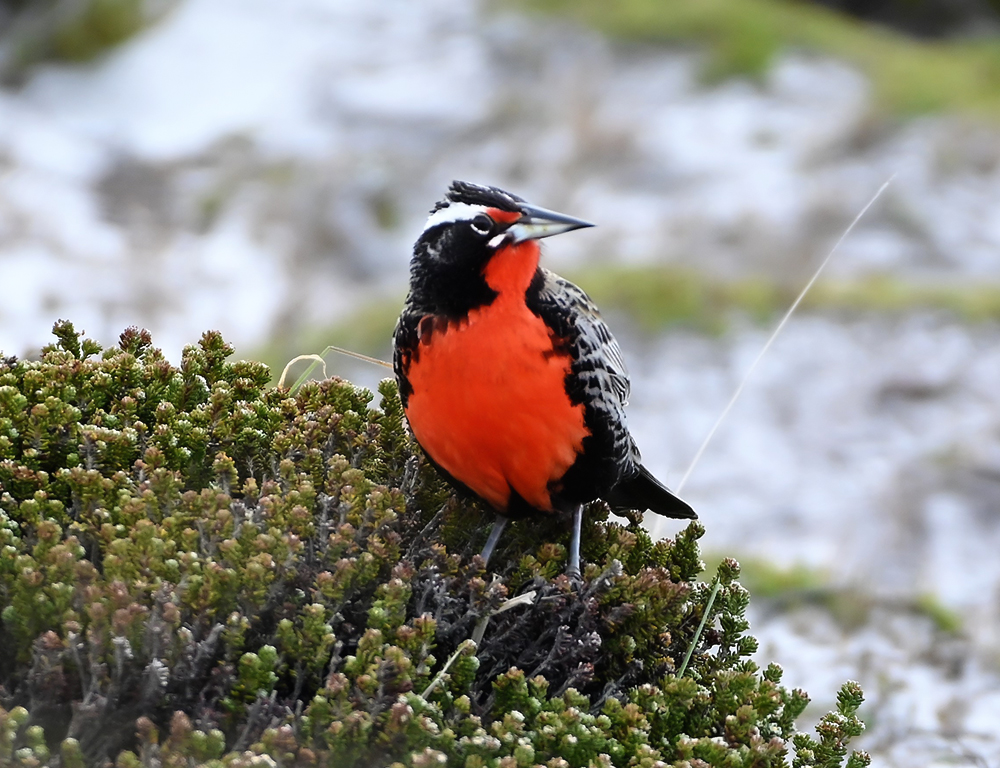
The Long-tailed meadowlark is a beautiful passerine bird found in southern South America and the Falkland Islands. The bird is approximately 25 to 28 cm long with a long, pointed bill and a fairly long tail.
The male species is predominantly dark brown with blackish streaking, while the female has a duller brown color. The Long-tailed meadowlark belongs to the meadowlark genus Leistes and falls under the icterid family.
Interestingly, this species is very similar in appearance to the endangered Pampas meadowlark.
These birds can be found in grasslands, agricultural fields, and open habitats with low shrubs. They are primarily insectivorous, feeding on insects and other small invertebrates.
The Long-tailed meadowlark has a beautiful song that sounds like a melodious whistle, which is audible from a distance.
Although they are not classified as endangered, habitat loss due to human activities is a threat to their populations.
Scientific classification:
| Kingdom | Animalia |
| Phylum | Chordata |
| Class | Aves |
| Order | Passeriformes |
| Family | Icteridae |
| Genus | Leistes |
| Species | L. loyca |
Also Featured In: Native Birds Of West Falkland,
30. Steamer Duck
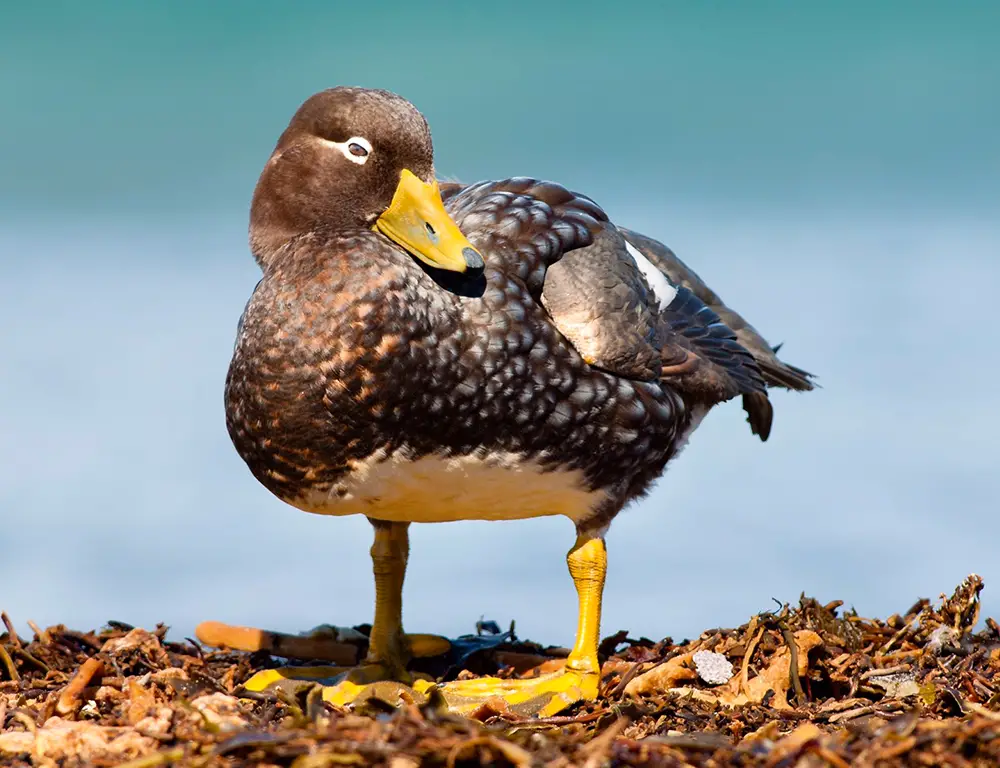
The steamer duck is a unique species of duck found only in the southern cone of South America in Chile and Argentina. This type of duck is known for being flightless, except for one species that can fly but rarely takes to the air.
The steamer duck is very aggressive and will even chase off predators like petrels. They are capable of bloody battles and are not to be underestimated. They have been known to use their strong wings to attack humans who come too close.
Despite their ferocity, these ducks are still admired for their unique characteristics and their ability to adapt to harsh environments. The steamer duck is truly a remarkable bird and a proud symbol of South America.
Scientific classification:
| Kingdom | Animalia |
| Phylum | Chordata |
| Class | Aves |
| Order | Anseriformes |
| Family | Anatidae |
| Subfamily | Tadorninae |
| Genus | Tachyeres Owen, 1875 |
31. Two-Banded Plover
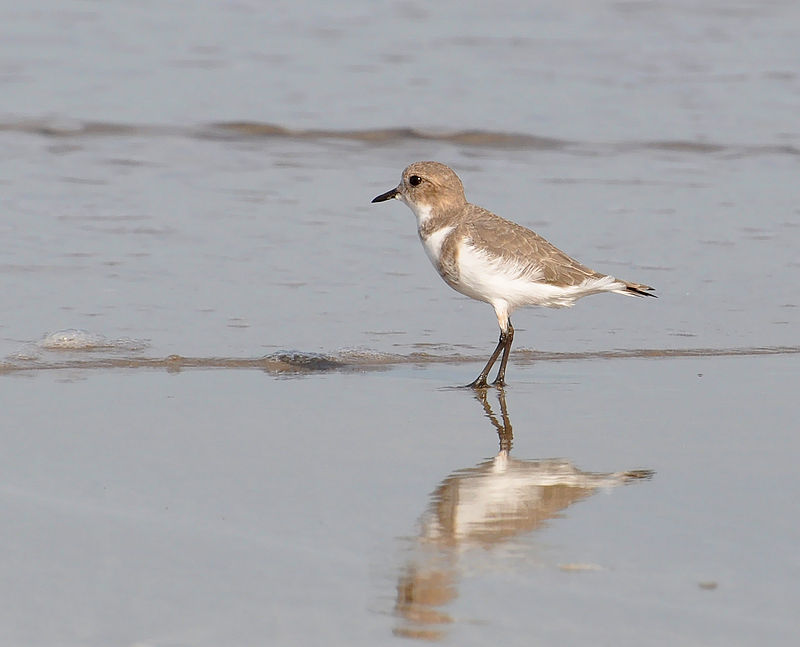
The Two-banded plover bird is a member of the Charadriidae family’s Charadriinae subfamily. It can be found in various countries, including Uruguay, Brazil, Argentina, Chile, and the Falkland Islands.
Some experts consider the Two-banded plover and its similar-looking relative, the Puna plover, as a superspecies. Both of these birds look similar, but the latter is monotypic and found mainly on the mainland.
The Two-banded plover bird is a delightful species of bird that is cherished by bird enthusiasts all over the world.
Scientific classification:
| Kingdom | Animalia |
| Phylum | Chordata |
| Class | Aves |
| Order | Charadriiformes |
| Family | Charadriidae |
| Genus | Charadrius |
| Species | C. falklandicus |
32. Green-Backed Firecrown
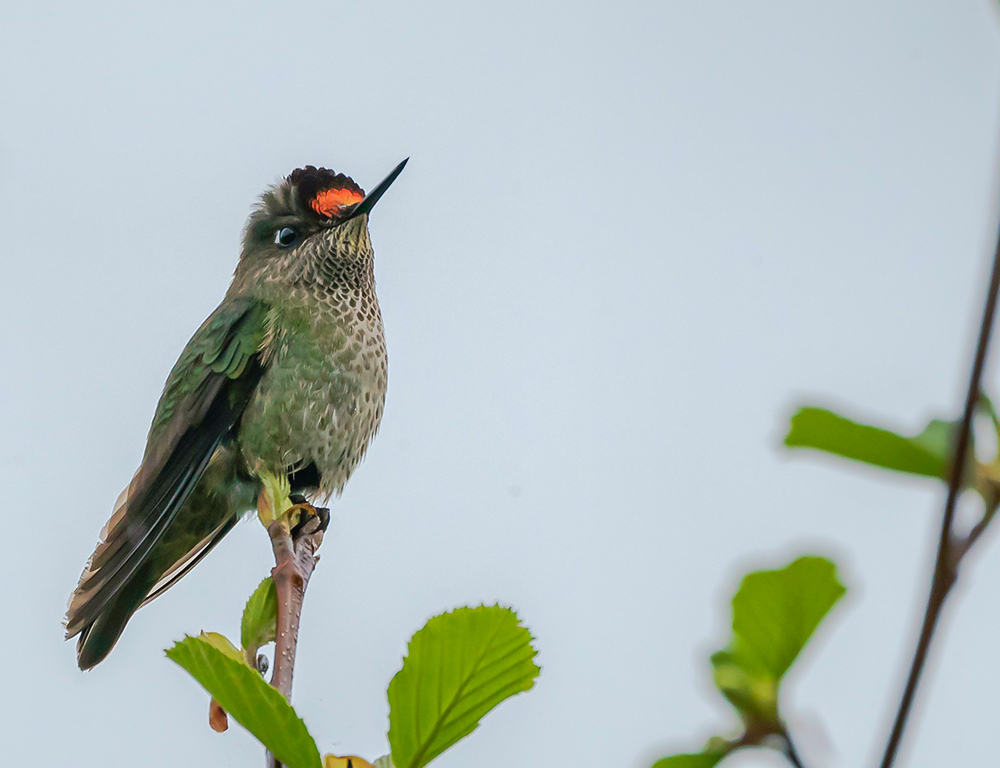
The green-backed firecrown is a unique hummingbird found in Argentina, mainland Chile, and the Juan Fernández Islands. It is the only species in its genus and shares it with only one other species, the Juan Fernandez firecrown.
This bird is commonly known as a “coquette” and belongs to the tribe Lesbiini of the subfamily Lesbiinae.
It has a distinctive green color on its back, giving it its name, and a crown of feathers on its head that often appears fiery in the sunlight.
Despite being small, the green-backed firecrown is known for being quite territorial, especially around food sources.
It is a skilled flier, able to hover in mid-air and rapidly dart from one place to another. It is also a nectar feeder and plays an important role in pollination.
Scientific classification:
| Kingdom | Animalia |
| Phylum | Chordata |
| Class | Aves |
| Clade | Strisores |
| Order | Apodiformes |
| Family | Trochilidae |
| Genus | Sephanoides |
| Species | S. sephaniodes |
33. Ashy-Headed Goose
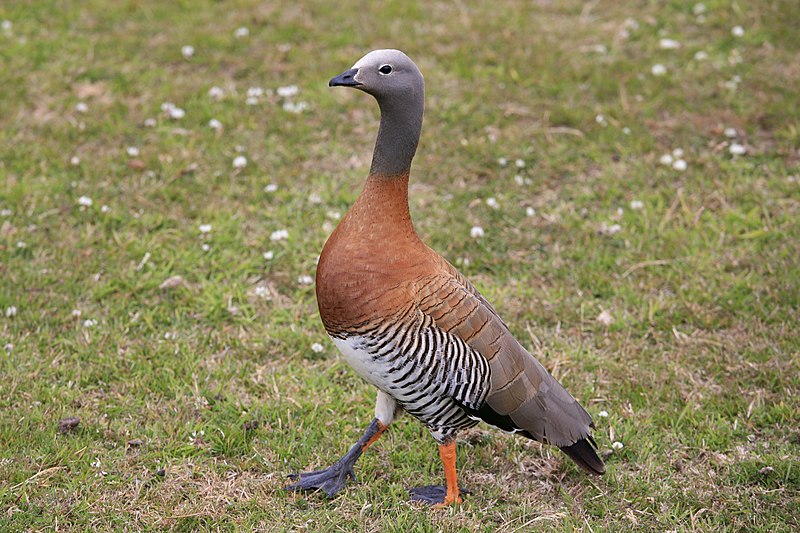
The Ashy-headed goose is a waterfowl species found in Argentina and Chile. It is the only member of its genus.
The birds measure 50-60 cm in length, with males weighing 1.62-2.27 kg and females weighing 1.47-1.49 kg.
Both sexes have the same plumage with ashy-grey heads and necks. These geese inhabit freshwater lakes, ponds, and rivers, feeding on aquatic vegetation and small invertebrates.
During the breeding season, they form monogamous pairs, with females laying 6-10 eggs in a nest constructed from grasses and feathers.
As a migratory species, they move to more southern areas during the winter. Threats to the Ashy-headed goose include hunting and habitat loss from agriculture and urbanization.
Conservation efforts are underway to protect their populations.
Scientific classification:
| Kingdom | Animalia |
| Phylum | Chordata |
| Class | Aves |
| Order | Anseriformes |
| Family | Anatidae |
| Genus | Chloephaga |
| Species | C. poliocephala |
34. Rufous-Chested Plover
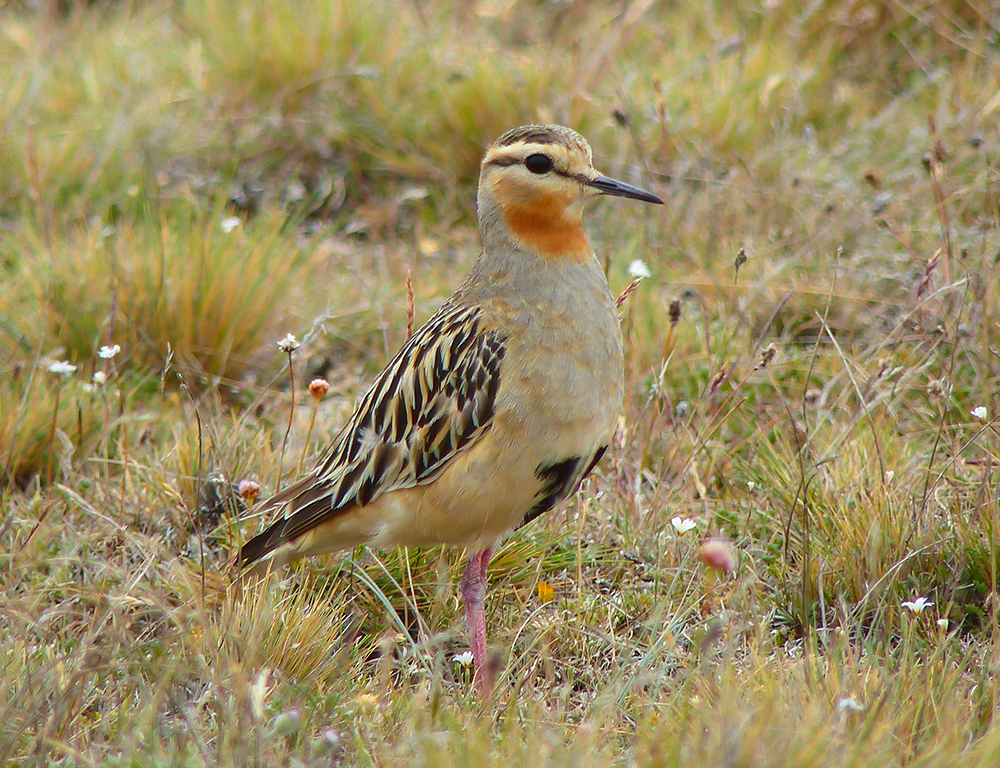
The Rufous-chested plover, also known as the Rufous-chested dotterel, is a bird species found in Argentina, Brazil, Chile, Uruguay, and the Falkland Islands.
Though some authors classify it in the Zonibyx genus, this treatment isn’t widely adopted. It belongs to the Charadriidae family’s Charadriinae subfamily. It is a small bird with a distinct rufous or reddish-brown chest.
Its feathers are brown and white with a black beak and legs. These birds prefer living in damp habitats like riverbanks, marshes, and wetlands. They feed on insects, worms, and small fish.
The conservation status of this species is considered “Least Concern” because its population is relatively stable.
Scientific classification:
| Kingdom | Animalia |
| Phylum | Chordata |
| Class | Aves |
| Order | Charadriiformes |
| Family | Charadriidae |
| Genus | Charadrius |
| Species | C. modestus |
Also Featured In: Birds That Live In Tristan da Cunha,
35. Kelp Goose
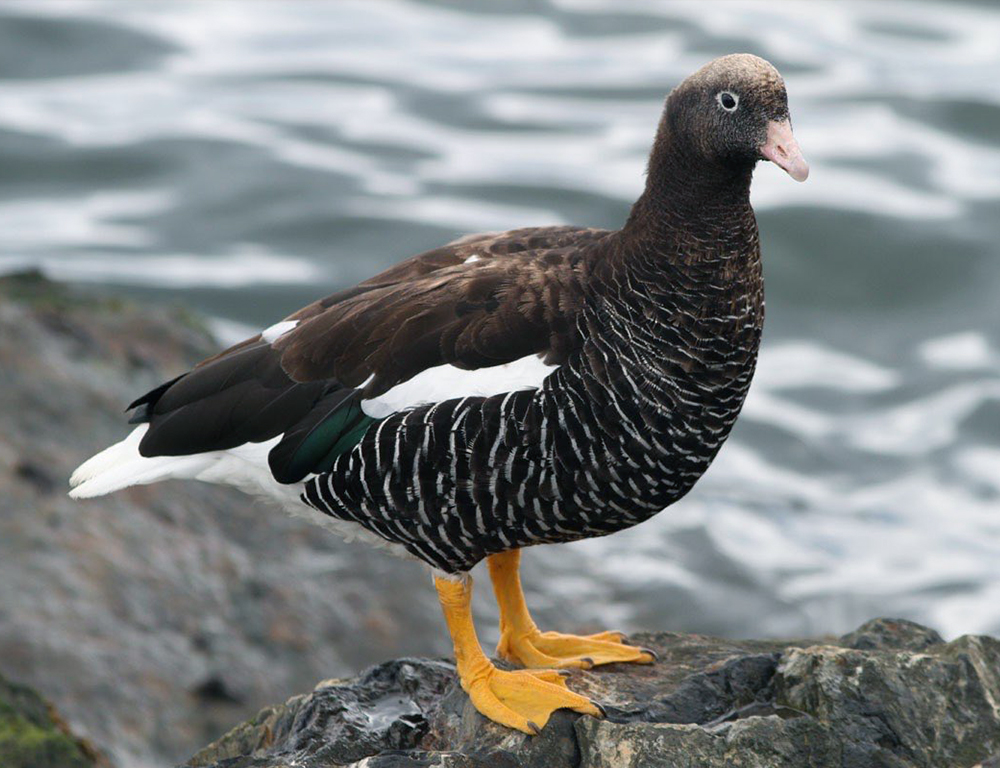
The kelp goose is a species of waterfowl found in Argentina, Chile, and the Falkland Islands. It belongs to the Tadornini tribe of subfamily Anserinae. This bird has two subspecies, C. h. hybrida and C. h. malvinarum.
The kelp goose is a medium-sized bird, measuring 55 to 65 cm in length. Male kelp geese of its nominate subspecies weigh 2.54 to 2.58 kg, while females weigh 2.00 to 2.17 kg.
These birds are known for their beautiful feathers, and their striking appearance makes them a popular species among bird enthusiasts.
Due to their aquatic nature, kelp geese are often spotted near the water, feeding on aquatic plants and insects.
They are an important part of the ecosystem and play a significant role in maintaining an ecological balance.
Scientific classification:
| Kingdom | Animalia |
| Phylum | Chordata |
| Class | Aves |
| Order | Anseriformes |
| Family | Anatidae |
| Genus | Chloephaga |
| Species | C. hybrida |
Also Featured In: Common Birds of Weddell Island,
36. Crested Duck
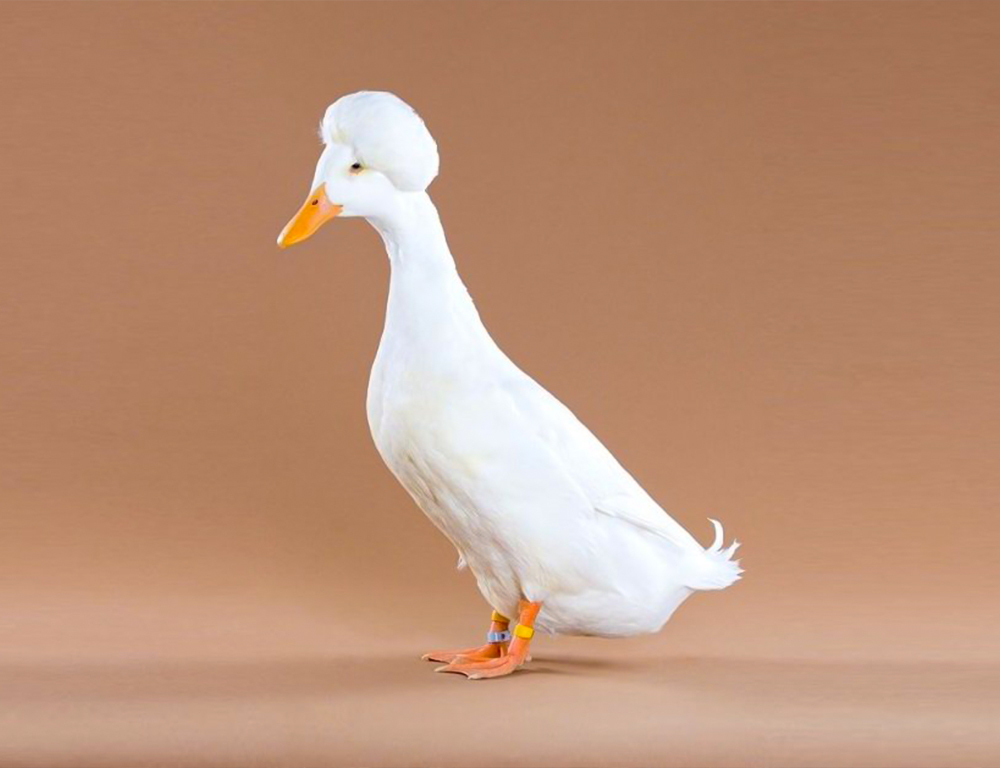
The Crested Duck, also known as the South American Crested Duck, is a unique waterbird species found in South America.
This monotypic duck belonging to the Lophonetta genus is sometimes mistakenly included in the Anas species.
However, its divergent origins from early dabbling duck evolution have marked its distinction. This species has two subspecies – Lophonetta specularioides alticola or Andean Crested Duck, and Lophonetta specularioides specularioides.
The Crested Duck is a delightful bird with a small crest on its head, which is often raised during courtship displays.
The species is commonly found in freshwater lakes, marshes, rivers, and streams. They are known to feed on a diverse range of aquatic vegetation and small aquatic creatures.
The Crested Duck’s unique features, behavior, and habitat make it a fascinating bird to observe in its natural settings.
Scientific classification:
| Kingdom | Animalia |
| Phylum | Chordata |
| Class | Aves |
| Order | Anseriformes |
| Family | Anatidae |
| Subfamily | Anatinae |
| Genus | Lophonetta Riley, 1914 |
| Species | L. specularioides |
37. Blackish Cinclodes
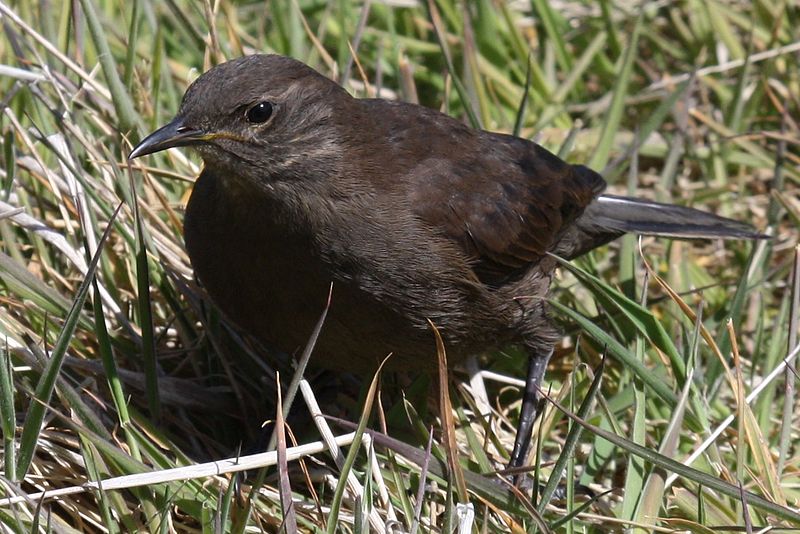
The Blackish cinclodes is a bird belonging to the family Furnariidae, native to the southern tip of South America and the Falkland Islands. It is also known as the tussac-bird or tussock-bird.
This passerine bird species is a small-sized bird measuring around 18-23 cm long. Both male and female birds share similar physical characteristics and they have almost identical plumage.
The bird can be easily tamed and often approaches humans closely, making it a common sighting in the region.
The Blackish cinclodes is an interesting bird to observe and study for bird enthusiasts and scientists alike due to its unique behaviors and habitat preferences in the Falkland Islands.
Scientific classification:
| Kingdom | Animalia |
| Phylum | Chordata |
| Class | Aves |
| Order | Passeriformes |
| Family | Furnariidae |
| Genus | Cinclodes |
| Species | C. antarcticus |
Also Featured In: Jason Islands Birds You Didn’t Know,
38. Dark-Faced Ground Tyrant
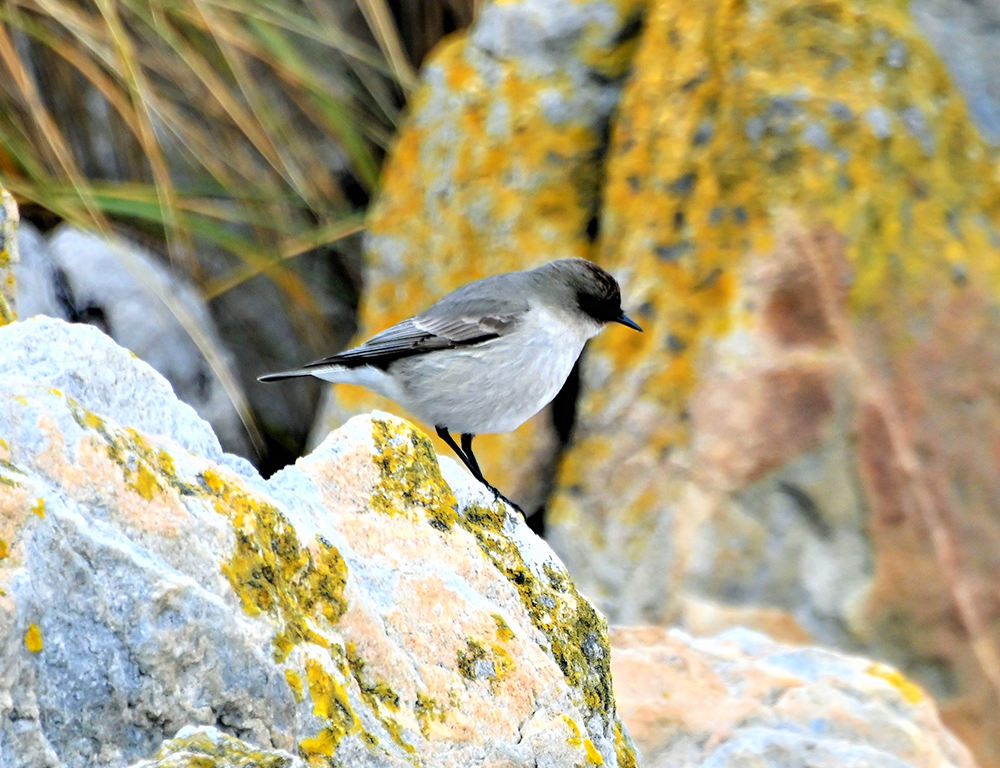
The Dark-faced ground tyrant is a small bird found in the southern Andes region and the Falkland Islands. It belongs to the tyrant flycatcher family and feeds on small invertebrates like flies and moths.
This ground-dwelling bird is 16 cm long, and the male is slightly larger than the female. It has long legs and a dark face, which gives it its name.
The dark-faced ground tyrant is known for its ability to forage on the ground, where it can be seen running and pouncing on its prey.
Its diet consists mainly of insects, and it uses its sharp beak to catch them. This bird is often found in mountainous regions and can survive in harsh conditions due to its strong adaptability.
The dark-faced ground tyrant is a fascinating species, and its unique features make it a popular subject for bird watchers and photographers alike.
Scientific classification:
| Kingdom | Animalia |
| Phylum | Chordata |
| Class | Aves |
| Order | Passeriformes |
| Family | Tyrannidae |
| Genus | Muscisaxicola |
| Species | M. maclovianus |
Also Featured In: Common Birds in Chiloé Island,
39. Magellanic Tapaculo
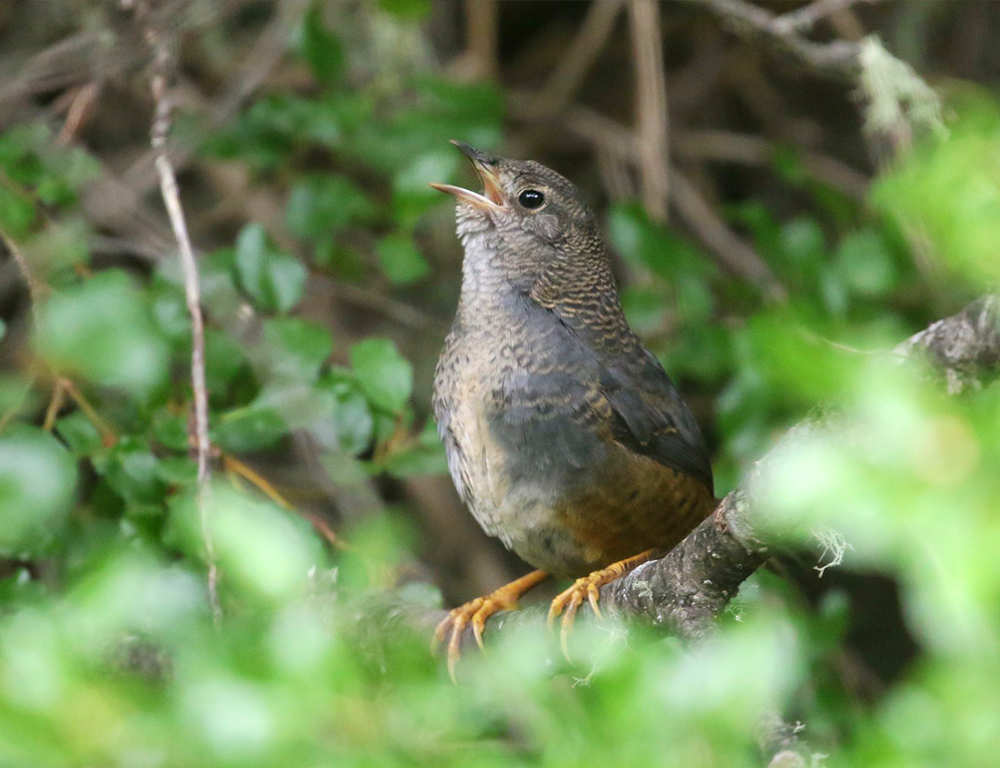
The Magellanic tapaculo is a tiny passerine bird found in the southern regions of South America. This bird is part of the Scytalopus genus of tapaculos.
Formerly known as the Andean tapaculo, it was part of a group of subspecies that were distributed along the Andes.
However, these subspecies were later recognized as their distinct species, leaving the Magellanic tapaculo without any subspecies.
Despite its small size, this bird is known for its distinctive vocalizations and is often heard more than seen.
Its plumage is predominantly brown with subtle variations, making it well-camouflaged in its natural habitat.
This bird is an important part of the southern South American ecosystem and plays a crucial role in pollination and seed dispersal.
Scientific classification:
| Kingdom | Animalia |
| Phylum | Chordata |
| Class | Aves |
| Order | Passeriformes |
| Family | Rhinocryptidae |
| Genus | Scytalopus |
| Species | S. magellanicus |
40. Black-Chinned Siskin
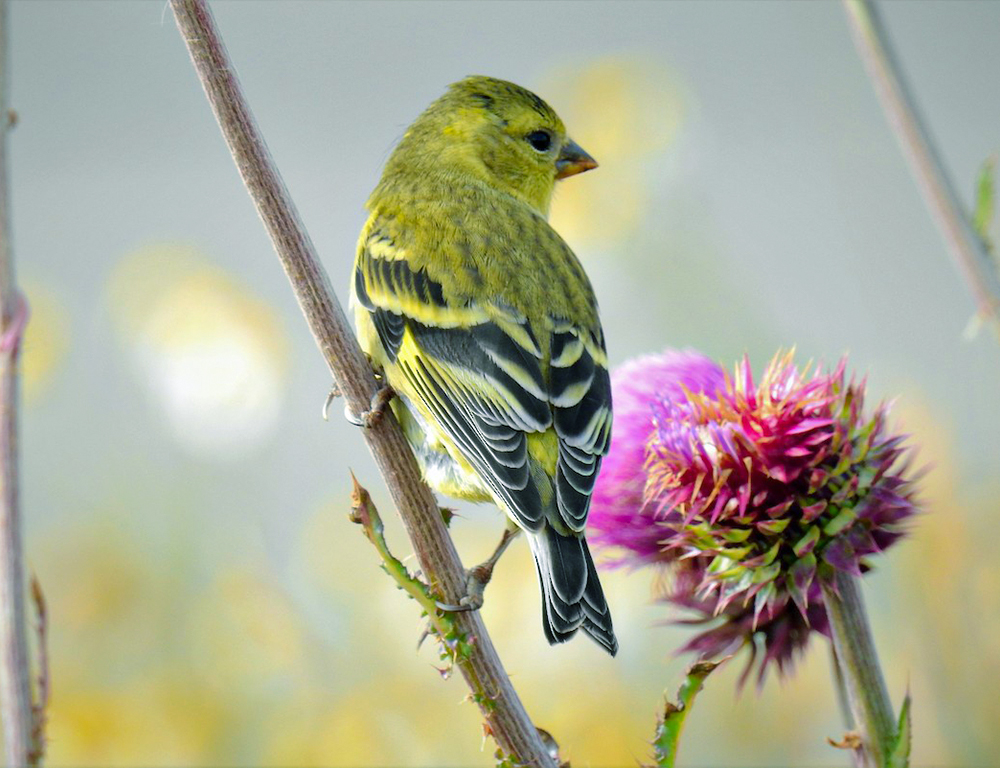
The Black-chinned siskin is a type of finch found in Argentina, Chile, and the Falkland Islands. Its natural habitats are temperate forests and degraded former forests.
This bird grows up to 13 centimeters in length. The male has a black crown and upper throat, with the rest of the head and upper body covered in yellow-green feathers.
This bird is one of the most common species of siskin found in the wild, and its diet consists mainly of seeds.
The Black-chinned siskin is known for its sweet melodious voice and is often kept as a pet bird.
Conservation efforts have been put in place to protect this bird’s habitat and ensure its survival in the wild.
Scientific classification:
| Kingdom | Animalia |
| Phylum | Chordata |
| Class | Aves |
| Order | Passeriformes |
| Family | Fringillidae |
| Subfamily | Carduelinae |
| Genus | Spinus |
| Species | S. barbatus |
41. Correndera Pipit
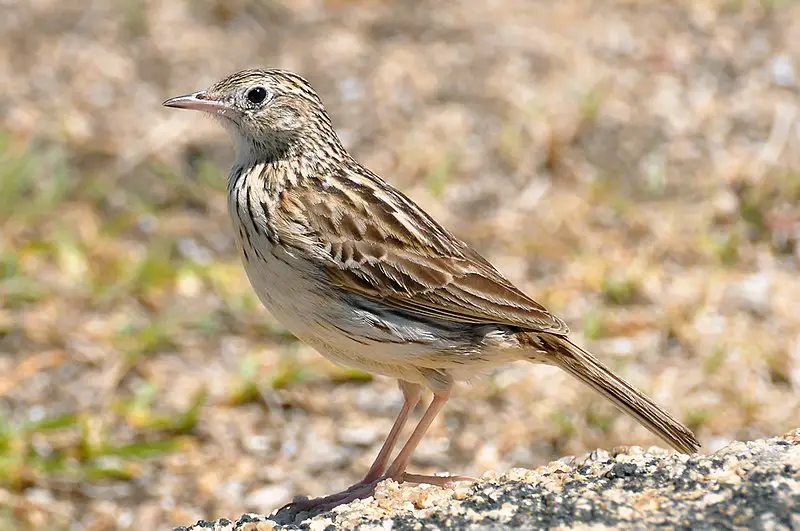
The Correndera pipit is a bird belonging to the Motacillidae family. It is commonly found in various regions, including Argentina, Bolivia, Chile, Uruguay, and Peru.
This species thrives in natural habitats such as temperate grasslands, subtropical or tropical high-altitude grasslands, and pastures.
The Correndera pipit is a small bird typically spotted in open fields, where it feeds on insects and spiders.
Its wings are brownish and grayish, which helps it blend in with its surroundings. The bird is known for its beautiful, melodic songs that are often used for communication with other members of its species.
The Correndera pipit is an important part of many grassland ecosystems, where it plays a crucial role in maintaining the balance of the ecosystem through its unique feeding habits.
Scientific classification:
| Kingdom | Animalia |
| Phylum | Chordata |
| Class | Aves |
| Order | Passeriformes |
| Family | Motacillidae |
| Genus | Anthus |
| Species | A. correndera |
42. Snowy Sheathbill
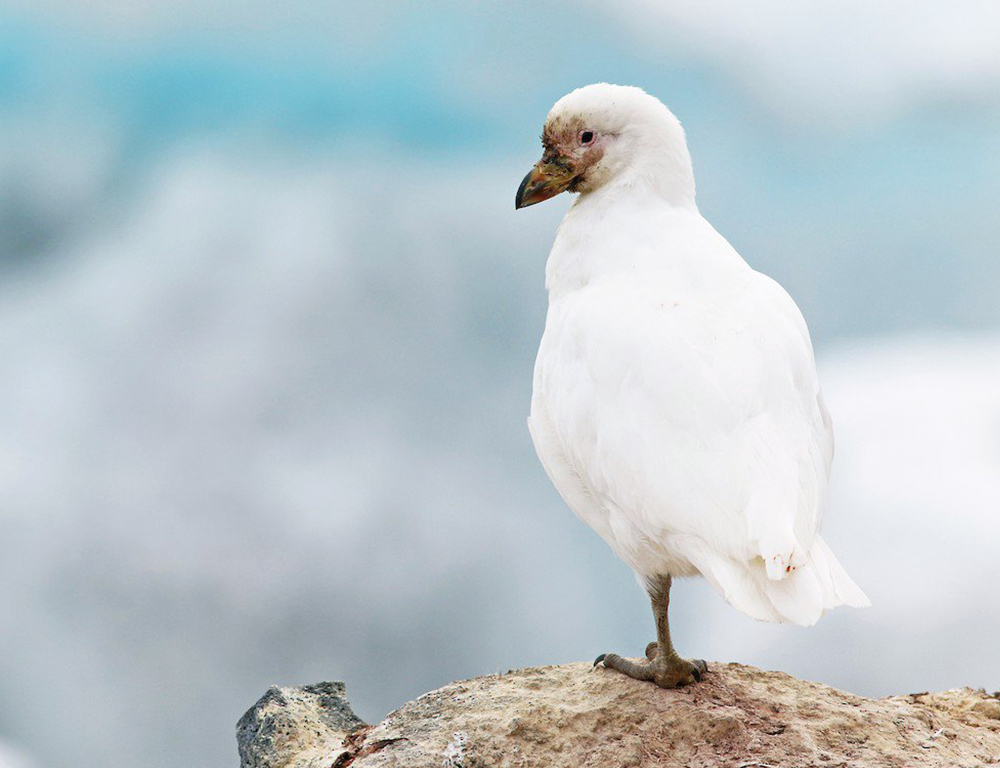
The snowy sheathbill, also known as the greater sheathbill, is a unique bird that is found on the Antarctic continent. This bird is the only land bird that is native to this area.
It is usually found on the ground and is easily recognized by its pale face. Johann Friedrich Gmelin formally described this bird in his revised and expanded edition of Carl Linnaeus’ work back in 1789.
The snowy sheathbill is one of two species of sheathbill and is also referred to as “paddy” by some. Despite being native to the harsh, snowy environment of Antarctica, this bird has adapted well and thrives in its natural habitat.
Scientific classification:
| Kingdom | Animalia |
| Phylum | Chordata |
| Class | Aves |
| Order | Charadriiformes |
| Family | Chionidae |
| Genus | Chionis |
| Species | C. albus |
Also Featured In: South Shetland Islands Birds You Need To Know,
43. Rockhopper Penguin
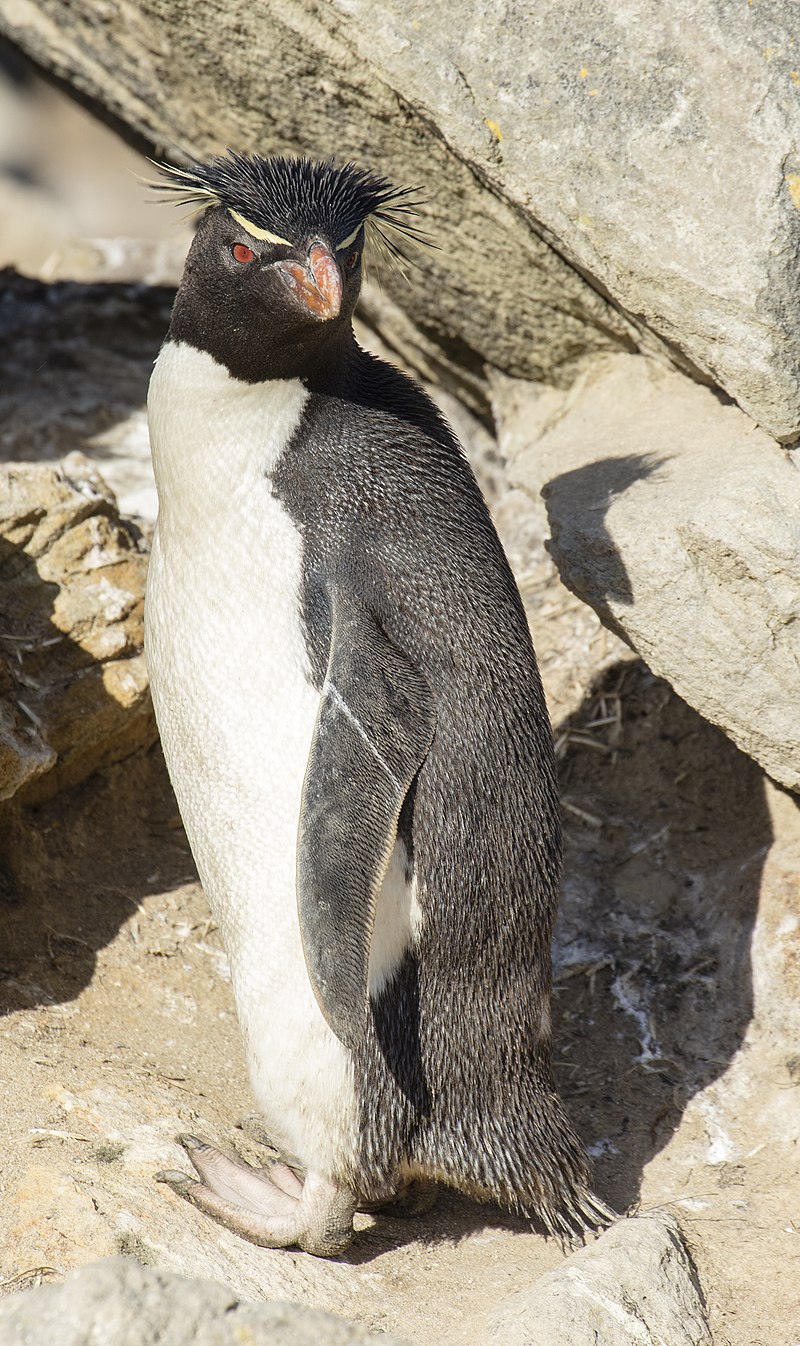
The Rockhopper penguin is a small-sized bird found in the southern parts of the Atlantic and Indian Oceans. They have distinctive bright yellow eyebrows and a feather crest on their head.
They mainly feed on krill, crustaceans, and small fish. These penguins are known for their unique behavior of hopping from rock to rock and swimming rapidly through the water.
They can jump vertically up to 1.5 meters high to reach their nesting sites.
Rockhopper penguins are monogamous and often return to the same breeding grounds year after year. Unfortunately, their population is declining due to overfishing, climate change, and loss of habitat.
Conservation efforts are underway to protect these charismatic birds and their important role in the ecosystem.
Also Featured In: Birds That Live around Saunders Island,
44. Striated Caracara
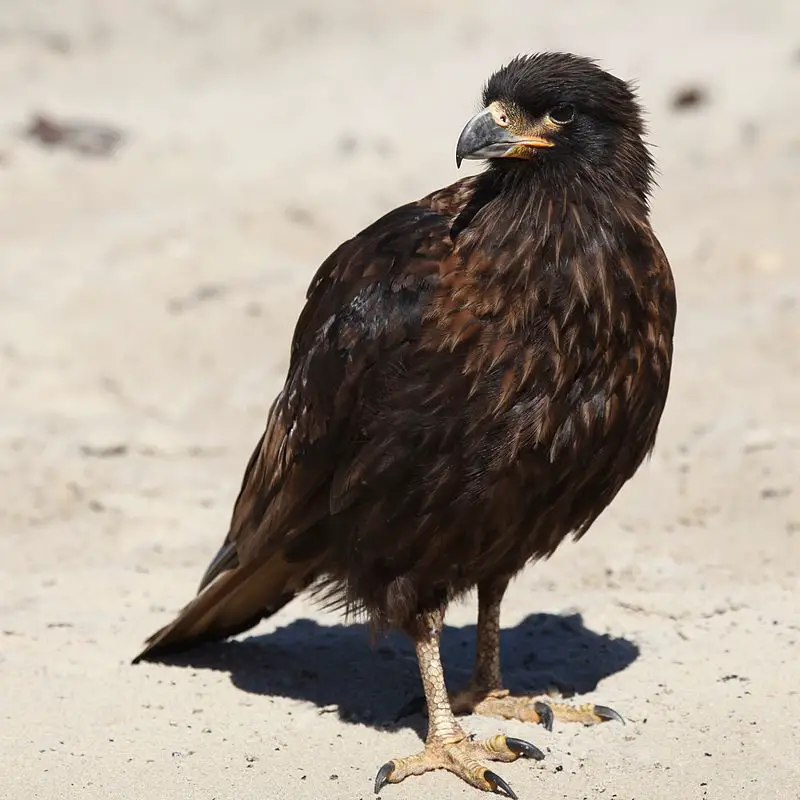
Known as the Johnny Rook in the Falkland Islands, the striated caracara is a bird of prey belonging to the falcon and caracara family. It is found in Argentina, Chile, and the Falkland Islands.
This bird is listed as Near Threatened and is also referred to as Forster’s caracara. It was first described in 1788 by the German scientist Johann Friedrich Gmelin.
As an apex predator, the striated caracara plays a crucial role in the ecosystem, controlling the population of small animals.
However, the population of striated caracaras is threatened due to habitat destruction and hunting.
Despite its name, the bird has a mottled appearance with black and white feathers. The striated caracara is a fascinating species of bird that is essential to the ecosystem.
Scientific classification:
| Kingdom | Animalia |
| Phylum | Chordata |
| Class | Aves |
| Order | Falconiformes |
| Family | Falconidae |
| Genus | Phalcoboenus |
| Species | P. australis |
45. Falkland Steamer Duck
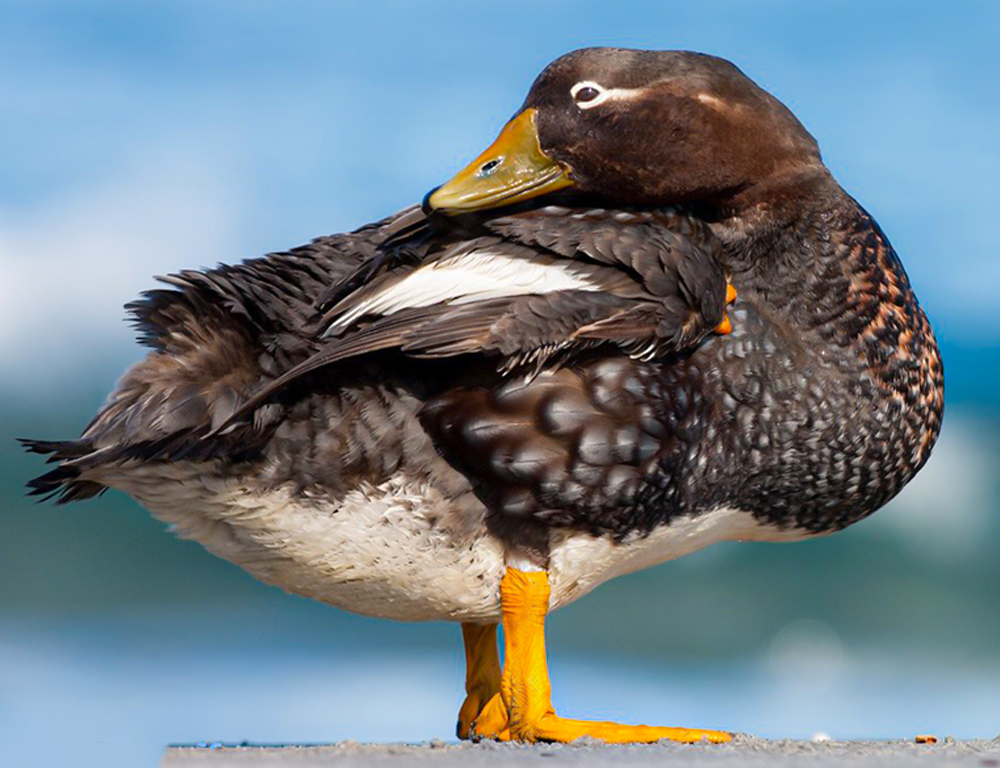
The Falkland steamer duck is a flightless bird that can be found exclusively on the Falkland Islands in the South Atlantic Ocean. Unlike other ducks, its swimming behavior has an unusual touch, resembling the motion of an old paddle steamer.
The Falkland steamer duck is one of the two bird species that are only found on the Falklands. Although it is not a threatened species, it is protected by the government of the Falkland Islands due to its limited distribution.
The bird is often seen in pairs or small groups and feeds on fish, crustaceans, and other aquatic organisms found in shallow coastal waters.
Its plumage is primarily dark brown with flecks of white and black while the head and neck are a dull grey.
The Falkland steamer duck plays an essential role in the ecosystem of the Falkland Islands and is considered to be a significant part of the archipelago’s unique biodiversity.
Scientific classification:
| Kingdom | Animalia |
| Phylum | Chordata |
| Class | Aves |
| Order | Anseriformes |
| Family | Anatidae |
| Genus | Tachyeres |
| Species | T. brachypterus |
46. Ruddy-Headed Goose
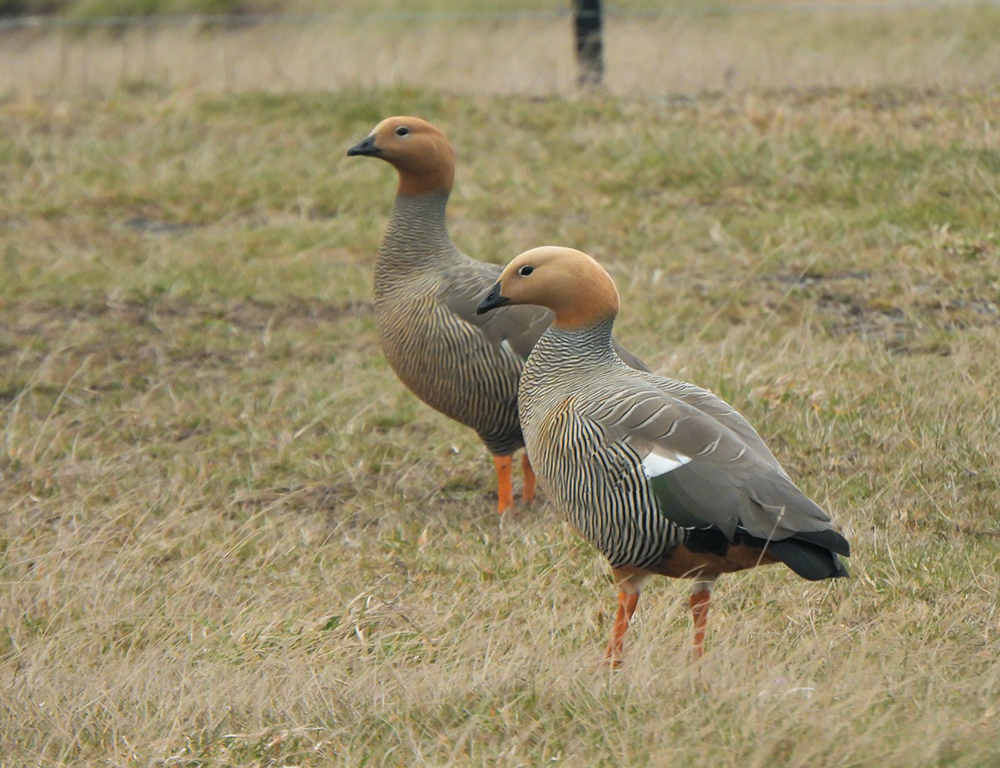
The ruddy-headed goose is a type of waterfowl found in Argentina, Chile, and the Falkland Islands. It is a monotypic species, which means it does not have any sub-species.
This bird can grow to be 45-52.5 cm (18-21 in) long and males are typically heavier than females. Speaking of weight, the males can weigh up to 2.02 kg (4.5 lb) and females can weigh between 1.20 to 1.50 kg (2.6 to 3.3 lb).
Interestingly, adults of this species have the same plumage meaning males and females look similar. They are called “ruddy-headed” because their heads are often a reddish color.
While not much is known about their behavior, the ruddy-headed goose is certainly a unique and interesting bird.Scientific classification:
| Kingdom | Animalia |
| Phylum | Chordata |
| Class | Aves |
| Order | Anseriformes |
| Family | Anatidae |
| Genus | Chloephaga |
| Species | C. rubidiceps |
47. Macaroni Penguin
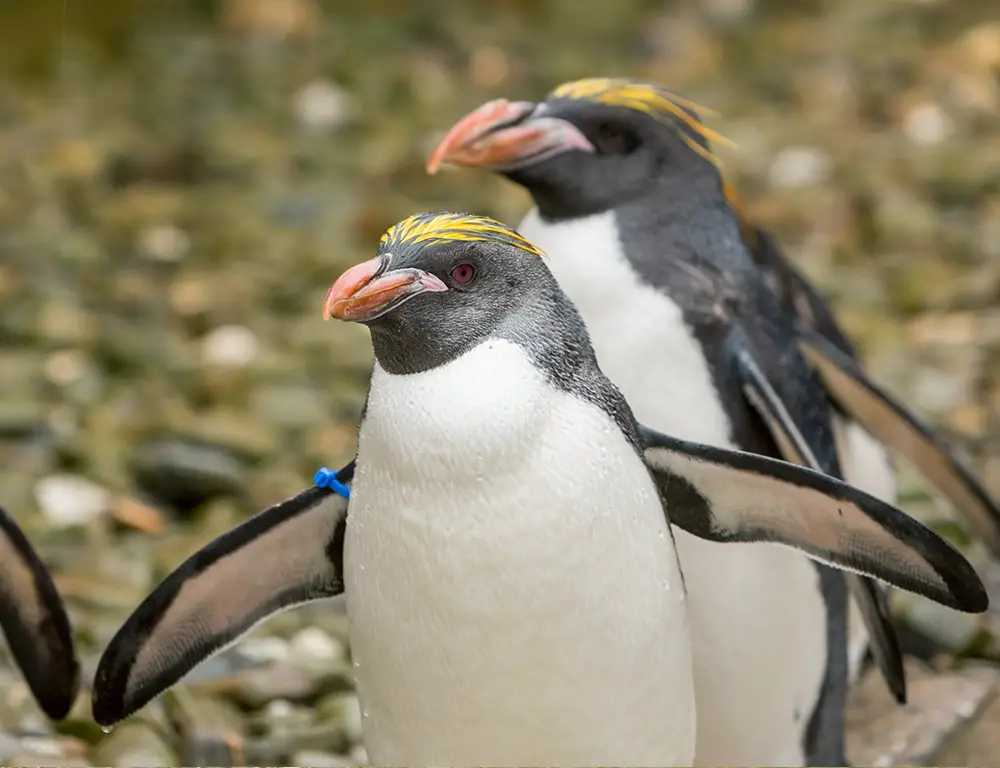
The Macaroni penguin is a type of crested penguin found in regions ranging from the Subarctic to the Antarctic Peninsula. Its striking appearance includes a black face and upperparts that contrast with the bird’s white underbelly.
The Macaroni penguin is easily recognized by its unique yellow crest. Some experts consider this bird and the royal penguin to be the same species due to their close relationship.
The Macaroni penguin is a fascinating species that is a master of swimming and diving in the frigid waters of the South Atlantic.
Scientific classification:
| Kingdom | Animalia |
| Phylum | Chordata |
| Class | Aves |
| Order | Sphenisciformes |
| Family | Spheniscidae |
| Genus | Eudyptes |
| Species | E. chrysolophus |
48. White-Bridled Finch
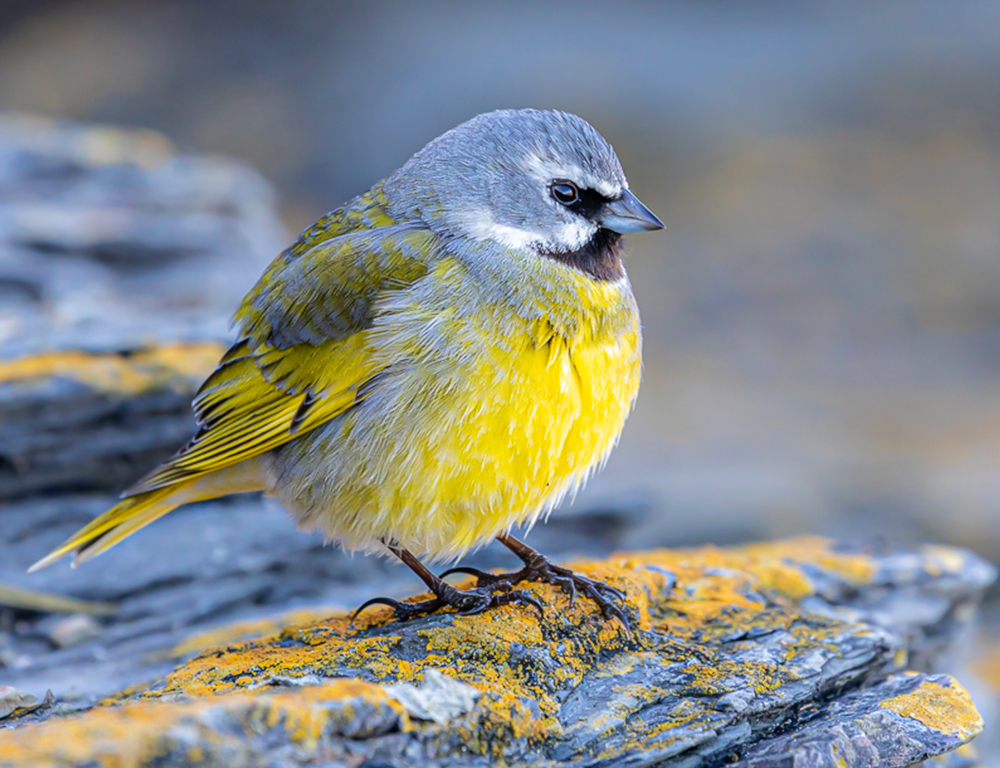
The White-bridled finch, also known as the canary-winged finch, is a small bird that belongs to the tanager family. It can be found in the grasslands of southernmost South America and has two subspecies.
Formerly placed in the Emberizidae family, it is now considered a tanager. The other bird species in the same genus is the yellow-bridled finch.
The White-bridled finch has a black throat and a white bridled area around its beak that differentiates it from other finches.
It has a short, conical bill and is known for its pleasant melodies. Due to habitat loss, its population is declining, and it is currently classified as a species of least concern by the IUCN.
Scientific classification:
| Kingdom | Animalia |
| Phylum | Chordata |
| Class | Aves |
| Order | Passeriformes |
| Family | Thraupidae |
| Genus | Melanodera |
| Species | M. melanodera |
49. Red-Backed Hawk
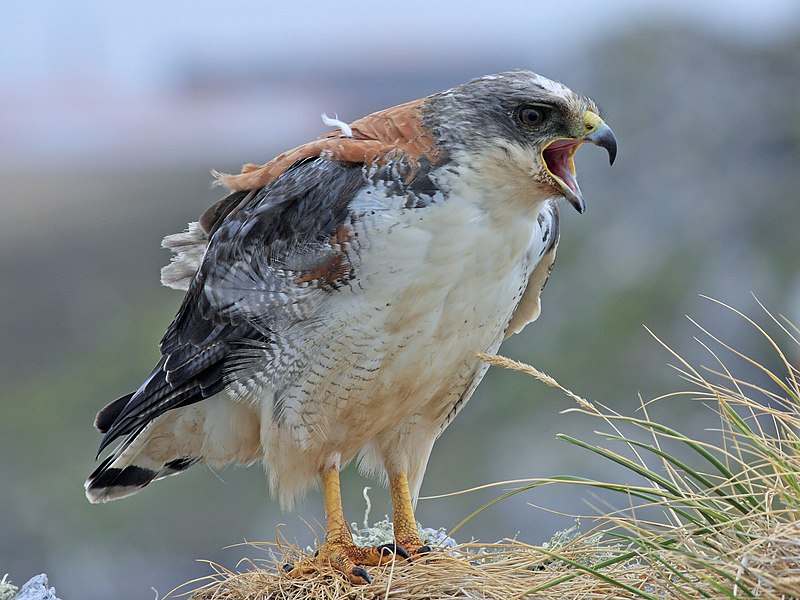
The Red-backed Hawk is a bird of prey in the Accipitridae family, found in open habitats in parts of western and southern South America, as well as in the Falkland Islands.
This polymorphic species is often common, but its taxonomy is disputed within some scientific communities.
Despite this, the beautiful and fierce Red-backed Hawk remains an important predator in its habitat and plays a crucial role in maintaining ecological balance.
Its unique physical characteristics and hunting abilities make it a formidable force to be reckoned with in the wild, showcasing the beauty and power of the natural world.
As is true for many species in the animal kingdom, a deeper understanding and appreciation for the Red-backed Hawk and its role in its respective ecosystem is crucial for its future survival.
Scientific classification:
| Kingdom | Animalia |
| Phylum | Chordata |
| Class | Aves |
| Order | Accipitriformes |
| Family | Accipitridae |
| Genus | Geranoaetus |
| Species | G. polyosoma |
50. Rufous-Tailed Plantcutter
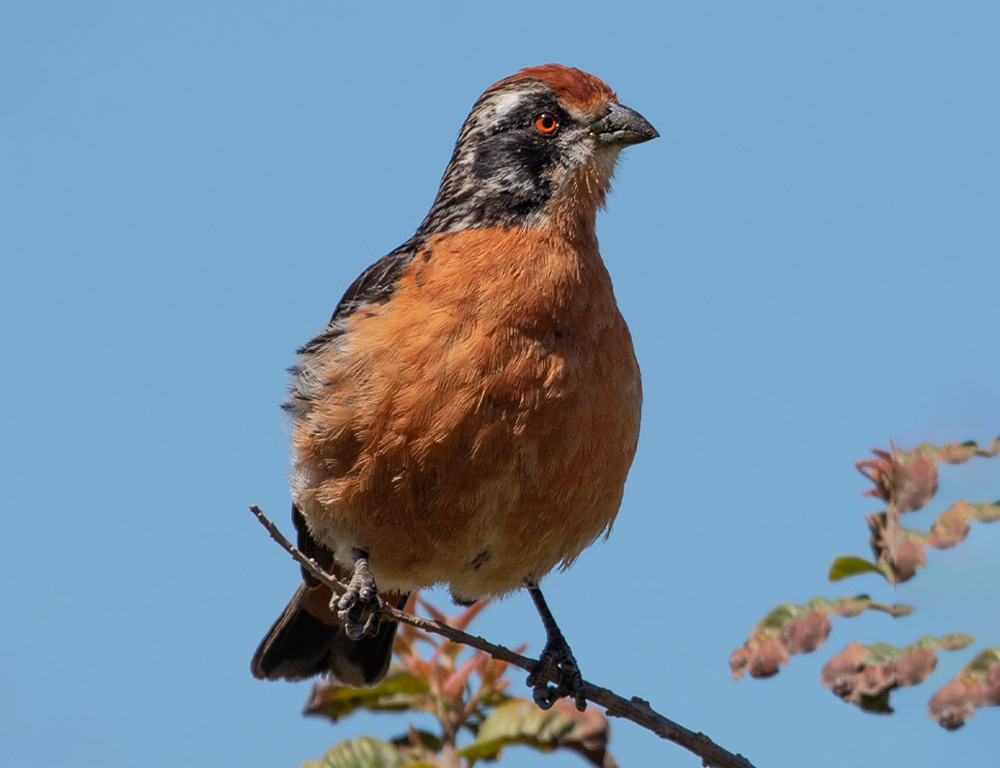
The Rufous-tailed plantcutter, also known as the Chilean plantcutter, is a medium-sized bird native to southern South America. It belongs to the cotinga family and is approximately 19 centimeters long.
One distinctive feature of this bird is its long black tail with a red base. Male Rufous-tailed plantcutters have greyish-brown upperparts, a chestnut crown and breast, and dark facial markings. Females are similar in appearance but do not have the chestnut coloring.
These birds are known for their unique feeding behavior, which involves using their strong bills to cut plant stems to access the pith within. Their preferred habitats include arid scrublands and grasslands.
While not considered endangered, the Rufous-tailed plantcutter is threatened by habitat loss due to human activities such as grazing and agriculture.
Scientific classification:
| Kingdom | Animalia |
| Phylum | Chordata |
| Class | Aves |
| Order | Passeriformes |
| Family | Cotingidae |
| Genus | Phytotoma |
| Species | P. rara |
51. Yellow-Winged Blackbird
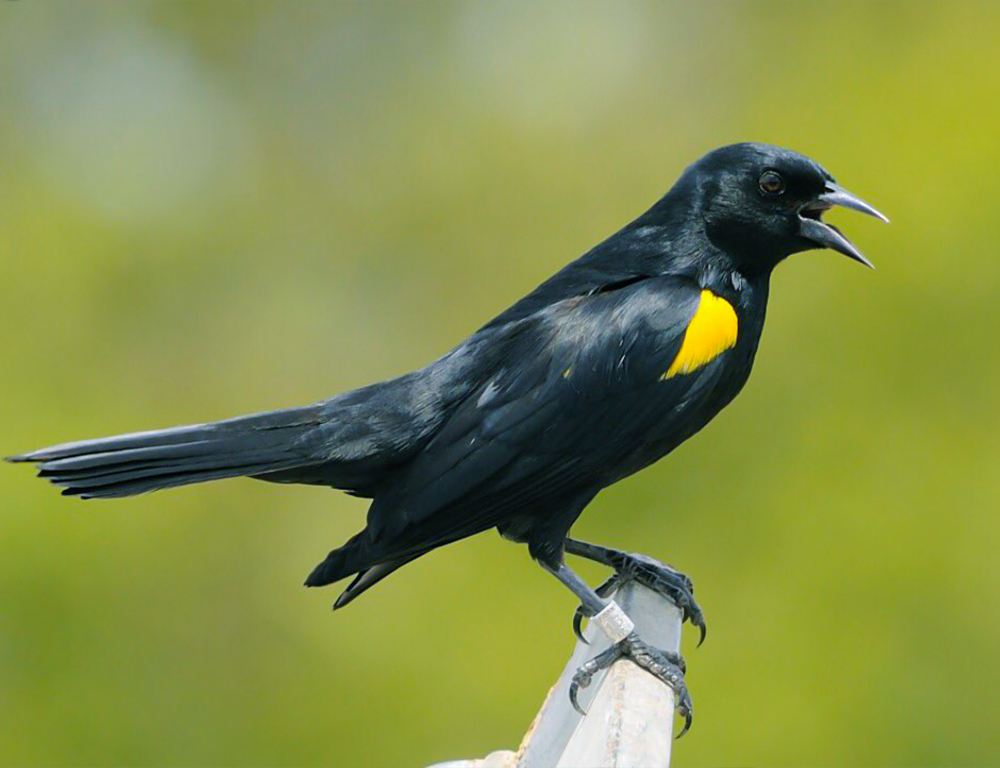
The Yellow-winged blackbird is a member of the Icteridae family of birds. This species can be found in several South American countries, including Argentina, Brazil, and Chile.
Swamps, intertidal marshes, and pastureland are the natural habitats of these birds. As their name suggests, Yellow-winged blackbirds have distinctive yellow wings. They are medium-sized birds with black feathers and a yellow beak.
Despite living in wetland areas, they primarily feed on seeds and insects. Though their population size is not currently a cause for concern, the Yellow-winged blackbird can be threatened by the loss and degradation of their habitat due to human activity or climate change.
Conservation efforts may be necessary to ensure the preservation of this fascinating and beautiful bird species.
Scientific classification:
| Kingdom | Animalia |
| Phylum | Chordata |
| Class | Aves |
| Order | Passeriformes |
| Family | Icteridae |
| Genus | Agelasticus |
| Species | A. thilius |
To Recap
The Falkland Islands boast a stunning array of 51 bird species that beckon both bird enthusiasts and nature lovers alike.
From the striking black and white markings of the Magellanic Penguin to the graceful flight of the Southern Giant Petrel, these avian residents showcase the extraordinary biodiversity of this remote archipelago.
The Falkland Islands serve as a vital habitat for these birds, emphasizing the need for responsible conservation practices.
As stewards of this unique environment, it is our collective responsibility to protect and preserve these magnificent creatures and their habitats, ensuring that the Falkland Islands remain a sanctuary for these incredible birds for generations to come.